Passport Wallet: The Ultimate Travel Accessory for Organization and Security
Passport wallets are a great way to keep your travel documents organized and secure. They come in a variety of styles and sizes, with features that can include RFID blocking, multiple compartments, and even built-in chargers for your electronic devices. Whether you’re a frequent traveler or just planning a single trip, a passport wallet can be a valuable investment.
When it comes to choosing the right passport wallet, there are several factors to consider. You’ll want to think about the size and style that will work best for your needs, as well as any additional features that might be important to you. Some passport wallets are designed to hold other essentials, like your phone or credit cards, while others are more focused on keeping your travel documents organized and secure.
In this article, we’ll take a closer look at passport wallets and explore some of the different types and features available. We’ll also offer some tips for choosing the right passport wallet and share some of the top brands on the market today. Whether you’re a seasoned traveler or just starting out, a passport wallet can be a valuable accessory to add to your collection.
Key Takeaways
- Passport wallets come in a variety of styles and sizes with different features to choose from.
- When choosing a passport wallet, consider the size, style, and additional features that are important to you.
- Some of the top passport wallet brands on the market today include Travelon, Bellroy, and Zero Grid.

Types of Passport Wallets
Passport wallets are a great way to keep all of your travel documents organized and secure. There are several different types of passport wallets available, each with its own set of features and benefits.
Leather Passport Wallets
Leather passport wallets are a popular choice for travelers who want a stylish and durable option. These wallets are typically made from high-quality leather and come in a variety of colors and styles. They often have multiple compartments for storing passports, boarding passes, credit cards, and other travel documents.
Nylon Passport Wallets
Nylon passport wallets are a lightweight and affordable option for travelers. These wallets are typically made from water-resistant nylon and come in a variety of colors and styles. They often have multiple compartments for storing passports, boarding passes, credit cards, and other travel documents.
Water-Resistant Passport Wallets
Water-resistant passport wallets are a great option for travelers who will be spending time in wet or humid environments. These wallets are typically made from materials that are resistant to water damage, such as nylon or leather. They often have multiple compartments for storing passports, boarding passes, credit cards, and other travel documents.
Leather Travel Wallets
Leather travel wallets are similar to leather passport wallets, but they often have additional features such as a zippered closure or a pen holder. These wallets are typically made from high-quality leather and come in a variety of colors and styles. They often have multiple compartments for storing passports, boarding passes, credit cards, and other travel documents.
Genuine Leather Passport Wallets
Genuine leather passport wallets are a high-end option for travelers who want a luxurious and durable option. These wallets are typically made from the highest quality leather and come in a variety of colors and styles. They often have multiple compartments for storing passports, boarding passes, credit cards, and other travel documents.
Features of Passport Wallets
Passport wallets are essential for anyone who frequently travels. They offer a safe and secure way to carry important documents such as passports, credit cards, and cash. Here are some of the key features to look for when choosing a passport wallet.
Size and Design
Passport wallets come in a variety of sizes and designs. Some are slim and compact, while others are larger and can hold more items. A standard wallet size passport holder is around 3.5 inches in length and 5 inches in height. However, slim designs are becoming increasingly popular due to their convenience and portability.
Durability and Material
The durability of a passport wallet is an important factor to consider. Premium materials such as leather and nylon are commonly used in the manufacturing of passport wallets. Leather offers a classic and sophisticated look while nylon provides a more sporty and casual appearance. Both materials are known for their durability and resistance to wear and tear.
Capacity and Organization
The capacity and organization of a passport wallet is another important feature to consider. Many passport wallets come with four card slots, which can hold credit cards, ID cards, and other small items. Some passport wallets also have additional credit card slots for added organization. Look for a passport wallet with enough space to hold all of your important documents.
Security Features
Security is a top priority when it comes to passport wallets. RFID-blocking passport wallets are becoming increasingly popular due to the rise of identity theft and credit card fraud. Look for a passport wallet with RFID-blocking technology to protect your personal information from being stolen.
In summary, when choosing a passport wallet, consider the size and design, durability and material, capacity and organization, and security features. By taking these factors into account, you can find a passport wallet that meets your needs and offers the protection and convenience you require.
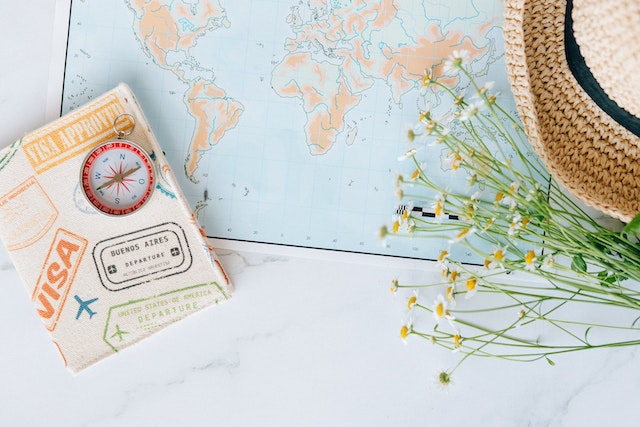
Choosing the Right Passport Wallet
When it comes to choosing the right passport wallet, there are a few things to consider. The right passport wallet can make traveling easier and more organized, while the wrong one can be a hassle. Here are some things to keep in mind when choosing a passport wallet:
Closure
One of the first things to consider is the closure of the passport wallet. Some options include snap, zipper, or magnetic closures. A snap closure is secure and easy to use, while a zipper closure provides extra security. Magnetic closures are convenient, but may not be as secure as other options.
Color
While color may not seem like an important factor, it can be helpful to choose a color that stands out. This can make it easier to find in a bag or purse. Neutral colors like black or brown are classic options, but brighter colors like red or blue can be easier to spot.
Size
Passport wallets come in a variety of sizes, so it’s important to choose one that fits your needs. Some options include slim wallets that only hold a passport and a few cards, while others have room for a passport, cash, and other travel documents.
Material
Passport wallets can be made from a variety of materials, including leather, nylon, and polyester. Leather is a classic option that provides durability and style, while nylon and polyester are often more affordable and lightweight.
Organization
Finally, consider the organization of the passport wallet. Look for options with designated slots for a passport, cards, and cash. This can make it easier to keep everything organized while traveling.
Overall, choosing the right passport wallet comes down to personal preference and needs. By considering factors like closure, color, size, material, and organization, travelers can find a passport wallet that works for them.
Top Passport Wallet Brands
When it comes to passport wallets, there are several brands that stand out in terms of quality, design, and functionality. Here are some of the top passport wallet brands to consider:
Leatherology
Leatherology is a brand known for its high-quality leather products. Their passport wallets are no exception, as they are made from full-grain leather and come in a variety of colors and styles. The wallets feature multiple card slots, a passport compartment, and a zippered pocket for coins or other small items. Leatherology also offers personalization options, allowing customers to add their initials or name to the wallet.
Etsy
Etsy is a marketplace for handmade and vintage items, including passport wallets. There are many independent sellers on Etsy who create unique and stylish passport wallets using a variety of materials, such as leather, fabric, and cork. Customers can browse through a wide selection of designs and choose a wallet that best suits their needs and style preferences.
Hero
Hero is a brand that specializes in travel accessories, including passport wallets. Their wallets are made from high-quality materials, such as vegan leather and recycled plastic bottles. They feature RFID blocking technology to protect against identity theft, as well as multiple card slots, a passport compartment, and a zippered pocket. Hero also offers a lifetime warranty on their products, ensuring customers can use their passport wallet for years to come.
Overall, these brands offer some of the best passport wallets on the market. Customers can choose from a variety of materials, designs, and features to find a wallet that meets their needs and style preferences.

How to Care for Your Passport Wallet
Passport wallets are essential for travelers to keep their passports, boarding passes, and other travel documents organized and secure. To ensure that your passport wallet lasts for a long time, it is important to take good care of it. Here are some tips on how to care for your passport wallet:
- Keep it clean: Regularly wipe your passport wallet with a damp cloth to remove any dirt or stains. Avoid using harsh chemicals or solvents that can damage the leather or other materials.
- Avoid exposure to water: Passport wallets are usually made of leather or other materials that can be damaged by water. Avoid exposing your passport wallet to water or other liquids. If it gets wet, wipe it dry immediately with a soft cloth.
- Protect it from the sun: Exposure to sunlight can cause leather to fade and crack over time. Avoid leaving your passport wallet in direct sunlight for extended periods of time.
- Store it properly: When not in use, store your passport wallet in a cool, dry place away from direct sunlight. Avoid storing it in a cramped space where it can get bent or crushed.
- Allow it to develop a patina: Leather passport wallets can develop a patina over time, which is a natural sheen or shine that occurs as the leather ages. Embrace the patina as it adds character and uniqueness to your passport wallet.
By following these simple tips, you can ensure that your passport wallet remains in good condition and lasts for a long time.
Shopping for Passport Wallets
When it comes to shopping for passport wallets, there are a few things to consider. One of the most important factors is the price. Passport wallets can range in price from a few dollars to over a hundred dollars, depending on the materials used and the brand.
For those looking to purchase passport wallets in bulk, many retailers offer discounts for larger orders. This can be a great way to save money if you are buying for a group or organization.
When shopping for passport wallets, it is also important to consider the size and features of the wallet. Some wallets are designed to hold just a passport, while others have additional pockets and compartments for credit cards, cash, and other travel documents.
It is also worth considering the material of the wallet. Leather is a popular choice for passport wallets, as it is durable and stylish. However, there are also many high-quality synthetic materials available that can be more affordable and environmentally friendly.
Overall, shopping for passport wallets can be a fun and exciting process. By considering the price, size, features, and material of the wallet, you can find the perfect one to suit your needs and budget.
Carrying Essentials in Your Passport Wallet
A passport wallet is an essential accessory for any traveler. It not only keeps your passport safe but also provides a convenient way to carry other important documents and essentials. Here are some of the items that you can carry in your passport wallet:
Cash
Carrying cash is always a good idea when traveling. You never know when you might need it for emergencies or for making purchases in areas where credit cards are not accepted. A passport wallet usually has a separate compartment for cash, which makes it easy to access and organize.
Documents
In addition to your passport, you can also carry other important documents such as your driver’s license, ID cards, and insurance papers in your passport wallet. This ensures that all your important documents are in one place and easily accessible when needed.
Travel Documents
When traveling internationally, you need to carry various travel documents such as visas, tickets, and travel itineraries. A passport wallet usually has multiple compartments that can accommodate all these documents, making it easy to keep them organized and accessible.
Credit Cards
Credit cards are a convenient way to make purchases when traveling. However, carrying them in your regular wallet can be risky as it can get stolen or lost. A passport wallet usually has slots for credit cards, which makes it easy to keep them organized and secure.
Boarding Passes
Carrying your boarding pass in your passport wallet is a convenient way to keep it safe and easily accessible. Most passport wallets have a separate compartment for boarding passes, which ensures that they don’t get lost or misplaced.
International Travel
If you are traveling internationally, you need to carry your passport with you at all times. A passport wallet not only keeps your passport safe but also ensures that all your important documents and essentials are in one place. This makes it easy to access them when needed and ensures that you have a hassle-free travel experience.
In conclusion, a passport wallet is a must-have accessory for any traveler. It provides a convenient way to carry all your important documents and essentials while keeping them safe and organized.
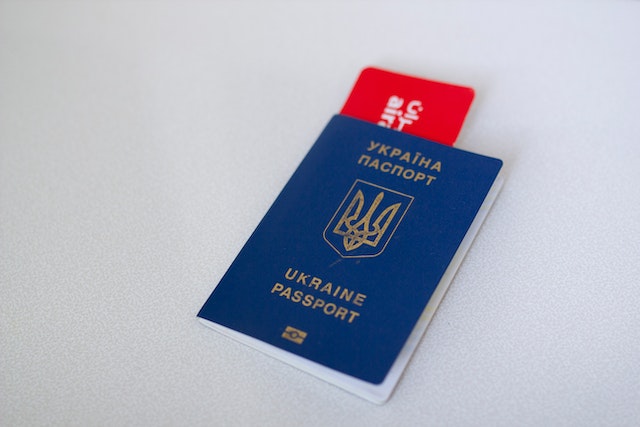
Additional Features
In addition to holding your passport, many passport wallets offer additional features that can enhance your travel experience. Here are some of the most common additional features to look for when choosing a passport wallet:
RFID Blocking
Many passport wallets come with RFID-blocking technology to protect your personal information from being stolen by hackers. This technology uses a special lining to block electromagnetic fields and prevent your credit card and passport information from being scanned without your knowledge.
Airtag Compatibility
Some passport wallets are designed to work with Airtags, small devices that can be attached to your luggage to help you locate it if it gets lost. If you’re a frequent traveler or tend to misplace your luggage, a passport wallet with Airtag compatibility can be a great investment.
Minimalist Design
For travelers who prefer to travel light, a minimalist passport wallet can be a great option. These wallets are designed to hold just the essentials, such as your passport, credit cards, and cash, and are often made from lightweight materials like nylon or leather.
Multiple Compartments
If you like to keep your travel documents organized, look for a passport wallet with multiple compartments. These wallets often have separate slots for your passport, boarding pass, credit cards, and cash, making it easy to find what you need when you need it.
Detachable Wrist Strap
A passport wallet with a detachable wrist strap can be a convenient option for travelers who want to keep their hands free. Simply attach the strap to your wrist and you’ll have easy access to your passport and other travel documents without having to carry a separate bag.
Overall, the additional features offered by passport wallets can make your travel experience more convenient and secure. When choosing a passport wallet, consider which features are most important to you and look for a wallet that meets your needs.
Frequently Asked Questions
What are some popular passport wallet designs for women?
There are many popular passport wallet designs for women, ranging from minimalist to more elaborate styles. Some popular designs include slim leather wallets, passport covers with multiple card slots, and passport holders with wrist straps. Many women also prefer passport wallets with fun patterns or colors to add a bit of personality to their travel accessories.
What is RFID protection and why do I need it in a passport wallet?
RFID (Radio Frequency Identification) protection is a feature that blocks electronic signals from being transmitted from your passport and credit cards. This helps prevent identity theft and fraud by blocking unauthorized access to your personal information. It is recommended to have RFID protection in your passport wallet to ensure the safety of your personal information while traveling.
What are some recommended passport wallet brands for men?
Some recommended passport wallet brands for men include Bellroy, Herschel Supply Co., Travelon, and Tumi. These brands offer a variety of styles and features, such as RFID protection, multiple card slots, and durable materials.
What are some features to look for in a travel passport wallet?
When choosing a travel passport wallet, it is important to look for features such as RFID protection, durability, multiple card slots, and a secure closure. Other useful features may include a wrist strap, a pen holder, and a zippered coin pouch.
Can you track your passport with an AirTag?
While AirTags can be used to track items such as luggage and backpacks, they cannot be used to track passports. This is because passports do not have a built-in tracking device and are not compatible with AirTags.
How can men carry their passport while traveling?
Men can carry their passport while traveling in a variety of ways, depending on their personal preference and the type of travel they are doing. Some options include using a passport wallet, carrying it in a secure pocket, or keeping it in a travel pouch worn around the neck or waist. It is important to keep the passport secure and easily accessible while traveling.
Costco Passport Photos: Affordable and Convenient Option for Your Travel Needs
Costco is a popular warehouse club that offers a wide range of products and services to its members. One of the services that Costco provides is passport photo printing. Passport photos are required for various official purposes, including applying for a passport, visa, or other government-issued ID. Costco’s Photo Center offers a convenient and affordable solution for individuals who need to print passport photos.
Understanding Costco’s Photo Center
Costco’s Photo Center is a one-stop-shop for all your photo printing needs. In addition to passport photos, they offer a variety of printing services, including photo books, canvas prints, and personalized gifts. The Photo Center uses high-quality equipment and paper to ensure that your photos are printed with excellent resolution and color accuracy.
Costco Passport Photo Services
Costco’s passport photo service is a fast and easy way to get your passport photos printed. The process is simple: you provide a photo, and Costco prints it in the required size and format. The Photo Center can print passport photos for various countries, including the United States, Canada, and the United Kingdom. Costco’s passport photo service is available to members and non-members alike, although members receive a discount on the cost of printing.
Key Takeaways
- Costco’s Photo Center offers passport photo printing services along with other photo printing services.
- Costco provides high-quality passport photos at an affordable price.
- Costco’s passport photo service is available to members and non-members, and members receive a discount on the cost of printing.
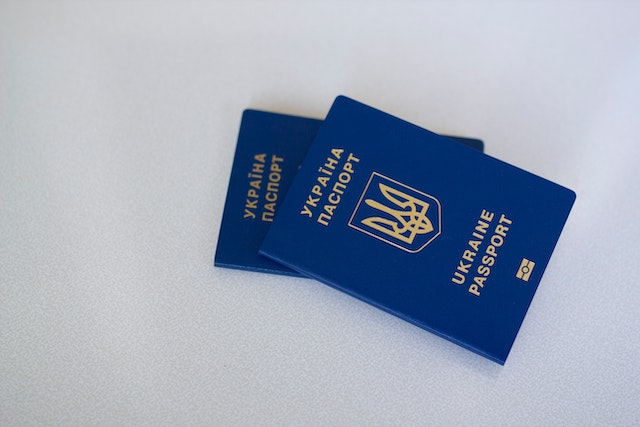
Understanding Costco’s Photo Center
Overview of the Photo Center
Costco’s Photo Center is a convenient and affordable way to print photos, create photo gifts, and even get passport photos taken. The Photo Center is available at most Costco warehouse locations and online.
At the Photo Center, customers can print photos in a variety of sizes and formats. From standard 4×6 prints to large canvas prints, the Photo Center has options for every need. Customers can also create personalized photo gifts such as photo books, calendars, and greeting cards.
One of the most popular services offered at the Photo Center is passport photos. Costco’s passport photos meet all government requirements and are accepted for passport and visa applications. The Photo Center also offers ID photos for other official documents, such as driver’s licenses and student IDs.
Accessing the Online Photo Center
Customers can access Costco’s online Photo Center from the comfort of their own home. The online Photo Center offers the same great services as the in-store Photo Center, with the added convenience of being able to order from anywhere.
To access the online Photo Center, customers can visit Costco’s website and click on the Photo Center tab. From there, they can upload photos, create photo gifts, and order prints. Customers can choose to have their prints shipped to their home or to their nearest Costco warehouse for pickup.
In conclusion, Costco’s Photo Center provides a variety of affordable and convenient photo services, from printing standard photos to creating personalized photo gifts. With the added convenience of the online Photo Center, customers can access these services from anywhere.
Costco Passport Photo Services
Costco is a popular retail chain that offers passport photo services to its members. With over 500 locations across the United States, Costco is a convenient option for anyone in need of passport photos.
In-Store Passport Photo Services
Costco’s in-store passport photo services are available at most locations. Members can get their passport photos taken by a trained technician who will ensure that the photos meet the requirements set by the U.S. Department of State. The photos are printed on high-quality photo paper and are ready in just a few minutes.
The cost of Costco’s in-store passport photo services varies by location, but it typically ranges from $4.99 to $6.99. Members can also choose to purchase a digital copy of their passport photos for an additional fee.
Online Passport Photo Services
Costco also offers online passport photo services through its website. Members can upload their own digital photo and have it printed to the required specifications. The photos are printed on high-quality photo paper and are shipped directly to the member’s home.
The cost of Costco’s online passport photo services is $4.99 for two photos. Members can also choose to purchase a digital copy of their passport photos for an additional fee.
Overall, Costco’s passport photo services are a convenient and affordable option for anyone in need of passport photos. Whether you choose to use their in-store or online services, you can be confident that your photos will meet the requirements set by the U.S. Department of State.
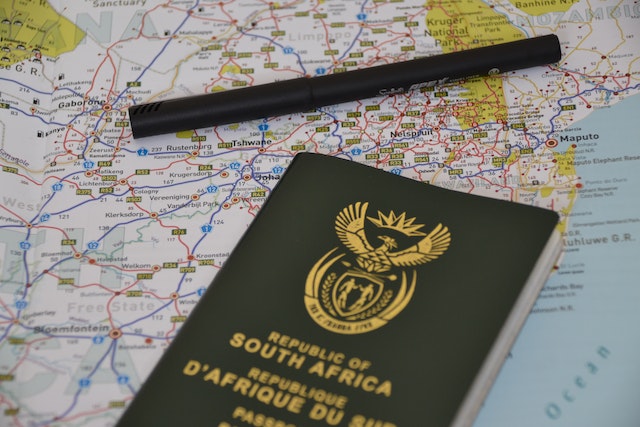
Cost and Affordability
When it comes to passport photos, cost is an important consideration for many people. Fortunately, Costco offers affordable passport photo services that are competitively priced compared to other options.
The price for a set of two passport photos at Costco is currently $4.99. This price includes both digital and printed copies of the photos. This is a great deal compared to other retailers that charge anywhere from $10 to $15 for the same service.
Costco’s low prices for passport photos make it an attractive option for those who need to renew their passport or apply for a new one. Additionally, Costco’s membership program allows members to save even more money on passport photos and other services.
Overall, Costco’s passport photo services offer a great value for the price. With affordable pricing and high-quality photos, Costco is a great choice for anyone in need of passport photos.
How to Print Passport Photos at Costco
To print passport photos at Costco, you can use either a smartphone or a computer. Here’s how:
Printing via Smartphone
- Download the Costco app on your iOS or Android device.
- Open the app and select “Photo Center” from the main menu.
- Choose “Passport Photos” and follow the prompts to upload your photo.
- Once your photo is uploaded, select the number of prints you want and add them to your cart.
- Proceed to checkout and pay for your order.
Printing via Computer
- Visit the Costco Photo Center website on your computer.
- Click “Passport Photos” and follow the prompts to upload your photo.
- Once your photo is uploaded, select the number of prints you want and add them to your cart.
- Proceed to checkout and pay for your order.
When printing passport photos at Costco, it’s important to ensure that your photo meets the specific requirements for passport photos. These requirements may vary depending on the country you’re applying to, so be sure to double-check before submitting your order.
Costco offers a variety of options for passport photo printing, including different sizes and paper types. Prices may also vary depending on your membership level, so be sure to check the pricing before placing your order.
Overall, printing passport photos at Costco is a convenient and affordable option for those in need of high-quality passport photos.
Comparing Costco with Other Providers
When it comes to getting passport photos taken, Costco is just one of many options available. Here is a comparison of Costco with some other popular providers:
Walmart
Walmart offers passport photo services at many of its locations. The cost is comparable to Costco, at around $4.44 per photo. However, some customers have reported longer wait times and lower quality photos at Walmart compared to Costco.
FedEx Office Store
FedEx Office Store offers passport photo services at many of its locations. The cost is higher than Costco, at around $14.95 per photo. However, they offer a satisfaction guarantee, which may be worth the extra cost for some customers.
UPS Store
The UPS Store also offers passport photo services at many of its locations. The cost is around $11 per photo, which is higher than Costco but lower than FedEx Office Store. Some customers have reported longer wait times and lower quality photos at UPS Store compared to Costco.
Walgreens
Walgreens offers passport photo services at many of its locations. The cost is comparable to Costco, at around $14.99 per photo. However, some customers have reported longer wait times and lower quality photos at Walgreens compared to Costco.
Rite Aid
Rite Aid offers passport photo services at many of its locations. The cost is comparable to Costco, at around $8.99 per photo. However, some customers have reported longer wait times and lower quality photos at Rite Aid compared to Costco.
CVS
CVS offers passport photo services at many of its locations. The cost is comparable to Costco, at around $14.99 per photo. However, some customers have reported longer wait times and lower quality photos at CVS compared to Costco.
Overall, while there are many providers that offer passport photo services, Costco seems to be a reliable and affordable option for customers. However, it is always a good idea to research and compare options before making a decision.
Passport Photos for Different Countries
When it comes to passport photos, different countries have different requirements. Costco offers passport photo services for a variety of countries, including the United States and Canada. Here are some things to keep in mind when getting passport photos for different countries.
US Passport Photos
US passport photos must meet certain requirements in terms of size, composition, and quality. The photo must be 2 inches by 2 inches in size, with the head measuring between 1 inch and 1 3/8 inches from the bottom of the chin to the top of the head. The background must be plain white or off-white, and the photo must be in color. The photo must also be taken within the last six months.
When getting a US passport photo at Costco, the photographer will ensure that the photo meets all of these requirements. The photo will be taken against a white or off-white background, and the photographer will make sure that the head is the correct size and that the photo is in color.
Canada Visa Photos
Canadian visa photos have their own set of requirements. The photo must be 35mm by 45mm in size, with the head measuring between 31mm and 36mm from the bottom of the chin to the top of the head. The background must be plain white, and the photo must be in color. The photo must also be taken within the last six months.
When getting a Canadian visa photo at Costco, the photographer will ensure that the photo meets all of these requirements. The photo will be taken against a white background, and the photographer will make sure that the head is the correct size and that the photo is in color.
Publix Passport
Utilizing Costco Passport Photo services for Publix.com Passport website requirements presents a convenient and cost-effective solution for employees. Costco’s reputation for providing high-quality passport photos aligns well with the professional standards upheld by Publix. By leveraging Costco’s efficient photo services, Publix employees can ensure compliance with passport photo guidelines without breaking the bank.
In conclusion, when getting passport photos for different countries at Costco, it is important to be aware of the specific requirements for each country. The photographers at Costco are knowledgeable about these requirements and will ensure that the photo meets all of the necessary criteria.
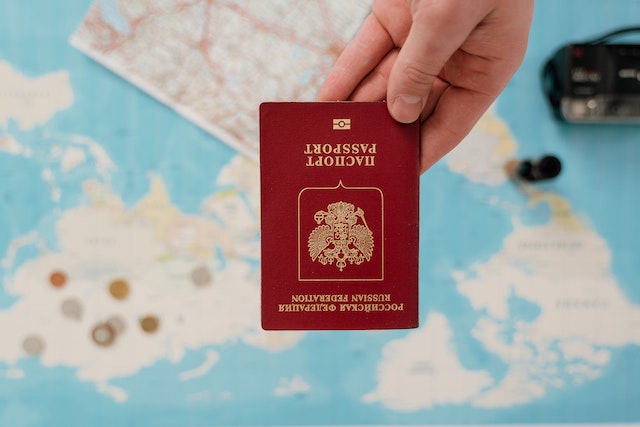
Additional Services at Costco’s Photo Center
In addition to passport photos, Costco’s Photo Center offers a variety of other services to its customers. These services include photo restoration, photography services, and digital photo printing.
Photo restoration is a service that can help bring old, damaged, or faded photos back to life. Costco’s Photo Center uses state-of-the-art technology to restore old photos to their former glory. This service can be especially helpful for those who want to preserve family memories or historical photos.
Costco’s Photo Center also offers photography services, such as portrait and event photography. Customers can schedule appointments with professional photographers to capture special moments like weddings, graduations, and family portraits. These services are available at select Costco locations and pricing varies based on the specific service requested.
For those looking to print their digital photos, Costco’s Photo Center offers high-quality printing services. Customers can upload their photos to Costco’s website and have them printed in a variety of sizes and formats. Additionally, Costco offers photo gifts such as photo books, canvas prints, and personalized photo cards.
Overall, Costco’s Photo Center provides a range of services beyond just passport photos. Whether you’re looking to restore old photos, schedule a professional photoshoot, or print your digital photos, Costco has you covered.
Importance of Following Passport Photo Guidelines
Passport photos are a crucial part of the passport application process, and following the guidelines set by the government is essential to ensure a smooth application process. Passport photo guidelines exist to ensure that the photos are of high quality, and they meet the requirements for biometric identification.
The guidelines for passport photos include the size of the photo, the type of paper, the background color, and the position of the subject. For example, the size of the passport photo must be 2×2 inches, and the subject must stand in front of a plain white or off-white background. Additionally, the subject must be facing the camera with a neutral expression, and the photo must be taken within the last six months.
Following these guidelines is crucial because passport applications that do not meet the requirements may be delayed or rejected, leading to unnecessary stress and inconvenience. Additionally, passport photos that do not meet the guidelines may not be accepted by other institutions, such as visa applications, which can cause further complications.
To ensure that passport photos meet the guidelines, Costco offers a passport photo template that customers can use to take their photos. The template ensures that the photo is the correct size, and it provides a guide for the position of the subject. By using the template, customers can ensure that their passport photos meet the guidelines and avoid any unnecessary delays or rejections.
In summary, following the passport photo guidelines is crucial for a smooth passport application process. By adhering to the guidelines, customers can ensure that their passport photos are of high quality and meet the requirements for biometric identification. Costco’s passport photo template is an excellent resource for customers to ensure that their photos meet the guidelines and avoid any complications.
Costco Membership and its Benefits
Costco is a membership-based warehouse club that offers a wide range of products and services at discounted prices. To access these benefits, customers need to have a Costco membership.
There are two types of Costco memberships: Gold Star and Executive. The Gold Star membership costs $60 per year and provides access to all Costco warehouses worldwide. The Executive membership costs $120 per year and includes additional benefits such as 2% cashback on purchases, extra discounts on Costco services, and exclusive access to certain products.
One of the benefits of having a Costco membership is the availability of affordable passport photos. Costco offers passport photos for $4.99, which is significantly cheaper than the prices charged by many other retailers. Members can also take advantage of other Costco services such as travel, insurance, and auto buying.
Costco memberships can be purchased online or in-store. Memberships can also be renewed online or in-store. Costco offers a 100% satisfaction guarantee on memberships and will refund the membership fee at any time if the customer is not satisfied.
Overall, a Costco membership can provide significant benefits to customers who frequently shop at Costco or use Costco services. The affordable passport photos are just one example of the many benefits that customers can enjoy with a Costco membership.
Costco’s Money-Back Guarantee
Costco offers a money-back guarantee on all of their products and services, including passport photos. If a customer is not satisfied with the quality of their passport photo, they can return it to Costco for a full refund.
The money-back guarantee is a testament to Costco’s commitment to customer satisfaction. It is a way for the company to stand behind the quality of their products and services, and to ensure that customers are happy with their purchases.
To take advantage of the money-back guarantee, customers simply need to bring their passport photo back to Costco with their receipt. The customer service desk will process the return and issue a refund.
It’s important to note that the money-back guarantee only applies to passport photos that were taken at Costco. If a customer takes their own passport photo and prints it at Costco, they are not eligible for a refund.
Overall, Costco’s money-back guarantee is a great way for customers to feel confident in their purchase of passport photos. It shows that Costco takes pride in the quality of their work and is willing to stand behind it.
Frequently Asked Questions
Where can I get cheap passport photos?
If you are looking for cheap passport photos, Costco is a great option. Costco offers passport photos at a reasonable price, and the quality of the photos is excellent. Additionally, Costco’s photo department is known for its quick and efficient service.
Who offers the cheapest passport photos near me?
If you are looking for the cheapest passport photos near you, it’s worth checking with your local Costco. Costco is known for offering some of the most affordable passport photos around, so it’s a great place to start your search.
Do I need an appointment for Costco passport photos?
No, you do not need an appointment to get passport photos taken at Costco. However, it’s worth noting that Costco’s photo department can get busy, so it’s a good idea to plan ahead and give yourself plenty of time to get your photos taken.
Does Walgreens offer passport photos?
Yes, Walgreens offers passport photos. However, the cost of these photos can vary depending on your location. It’s worth checking with your local Walgreens to see what their prices are like.
How much do passport photos cost?
The cost of passport photos can vary depending on where you go. However, at Costco, passport photos typically cost around $5.99. This is a great price considering the quality of the photos.
Can I order pictures from Costco online?
Yes, you can order pictures from Costco online. Costco offers a wide range of photo products, including prints, canvases, and photo books. Ordering photos online is a great way to save time and get high-quality prints delivered straight to your door.
Can a Felon Get a Passport? Understanding the Restrictions and Requirements
It is a common question among convicted felons whether they are eligible for a passport. The answer is not straightforward and depends on several factors, including the nature of the crime, the sentence, and the individual’s current legal status. In this article, we will explore the topic of felons and passports, including eligibility requirements, restrictions, and ways to overcome ineligibility.
Understanding the Basics
The United States Department of State issues passports to U.S. citizens for international travel. The passport serves as a form of identification and allows the holder to enter and exit foreign countries. To obtain a passport, an individual must complete the application process and meet the eligibility requirements. However, not everyone is eligible for a passport, and certain criminal convictions can disqualify an individual from obtaining one.
The Passport Application Process
The passport application process is relatively straightforward, and most U.S. citizens can apply for a passport by following the standard procedures. However, those with felony convictions may face additional challenges and restrictions. It is essential to understand the application process and eligibility requirements before applying for a passport as a convicted felon.
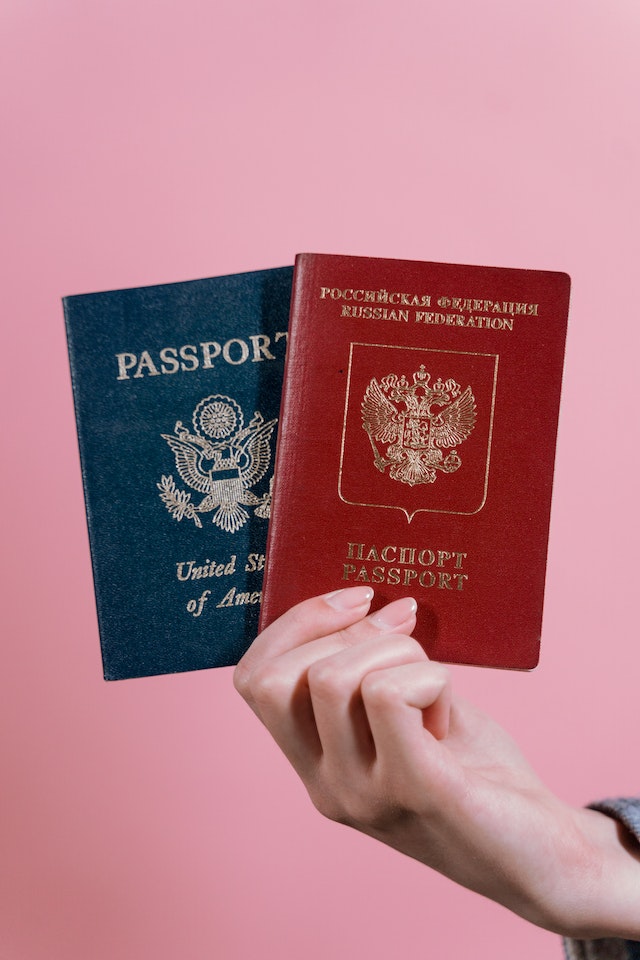
Understanding the Basics
What is a Felon
A felon is a person who has been convicted of a serious crime, such as murder, rape, or robbery. Felonies are considered more severe than misdemeanors and can result in imprisonment for more than a year. Individuals who have been convicted of a felony may face limitations on their rights, including the right to vote, own firearms, and hold certain jobs.
What is a Passport
A passport is an official government document that verifies a person’s identity and citizenship. It is required for international travel and serves as proof of identity when entering or leaving a country. Passports are issued by the government of the country of citizenship and contain personal information, including the holder’s name, date of birth, and photograph.
In the United States, the Department of State issues passports. There are two types of U.S. passports: a traditional passport book and a passport card. The traditional passport book is valid for international travel by air, sea, or land, while the passport card is only valid for land and sea travel to and from Canada, Mexico, the Caribbean, and Bermuda.
Can a Felon Get a Passport
Generally, felons are not automatically disqualified from obtaining a passport. However, there are certain circumstances where a felon may be denied a passport. For example, if a felon is on parole, probation, or serving a sentence, they may not be able to obtain a passport until their sentence is complete.
Additionally, if a felon owes more than $2,500 in child support, they may be denied a passport. This is because the Passport Denial Program requires the Department of State to deny passport applications to individuals who owe a significant amount of child support.
It is important to note that a passport is a form of identification and felons may be required to provide additional documentation to prove their identity. This may include a government-issued ID, such as a driver’s license or state ID, or other documentation, such as a birth certificate or social security card.
Overall, while felons may face certain limitations on their rights, obtaining a passport is not necessarily one of them. As long as they meet the requirements and provide the necessary documentation, they can apply for and obtain a passport like any other U.S. citizen.
The Passport Application Process
When it comes to applying for a passport, the process is the same for everyone, regardless of their criminal history. However, there are certain requirements that must be met, and it’s important for felons to be aware of these before beginning the application process.
Form DS-11
The first step in applying for a passport is to fill out Form DS-11, which is available online or at passport acceptance facilities. This form requires personal information such as name, date of birth, and social security number, as well as information about the applicant’s previous passports and travel plans.
Passport Photo
In addition to the application form, applicants must also provide a passport photo. This photo must meet certain requirements, such as being in color, taken within the last six months, and showing a clear image of the applicant’s face. Passport photos can be taken at many locations, including drugstores and post offices.
Passport Agency
Once the application form and photo have been completed, the next step is to submit them to a passport agency or acceptance facility. These facilities are located throughout the country and are authorized to accept passport applications. It’s important to note that not all facilities offer the same services, so it’s important to check with the facility beforehand to ensure they can meet your needs.
Overall, the passport application process is straightforward and can be completed by anyone, including felons. However, it’s important to ensure that all requirements are met and that the necessary documents and identification are provided. By following these steps, felons can obtain a passport and enjoy the benefits of international travel.
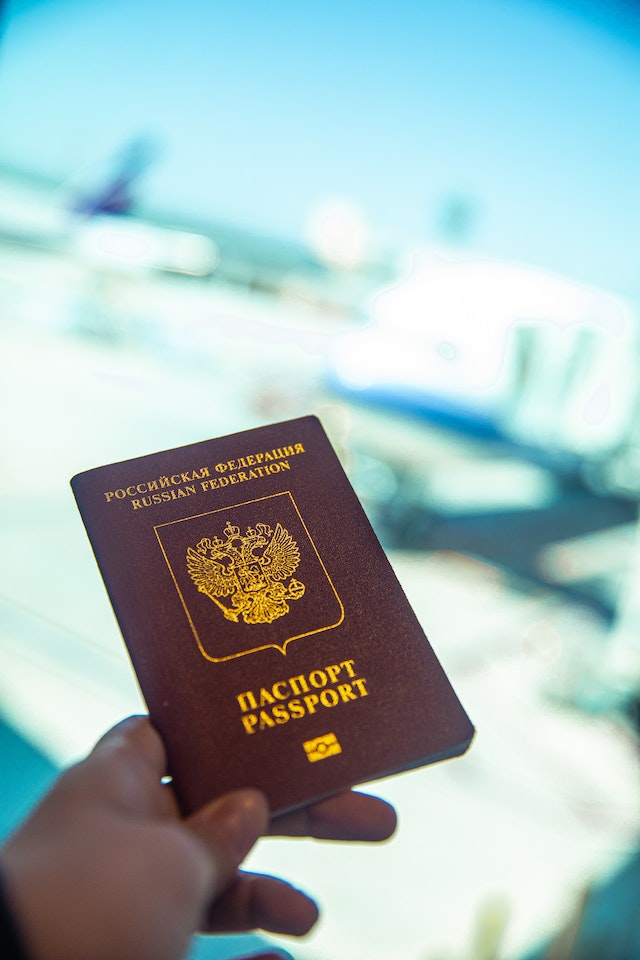
Felony Convictions and Passport Eligibility
Individuals who have been convicted of a felony may face restrictions when it comes to obtaining a passport. The U.S. Department of State is responsible for issuing passports, and they have strict guidelines that must be followed.
Felony Convictions
A felony conviction can result in the denial of a passport application. This is especially true if the crime involved drug trafficking or a sex offense. In general, the Department of State will deny passport applications for individuals who are currently under indictment or have an outstanding warrant for a felony offense.
International Drug Trafficking
Individuals who have been convicted of international drug trafficking may be denied a passport. The Department of State takes drug trafficking very seriously, and they do not want to issue passports to individuals who may use them to engage in further criminal activity.
Unpaid Federal Taxes
Individuals who owe more than $51,000 in unpaid federal taxes may be denied a passport. This is due to a law passed in 2015 called the Fixing America’s Surface Transportation (FAST) Act. The law allows the Department of State to deny passport applications for individuals who owe a significant amount of money in taxes.
Unpaid Child Support
Individuals who owe more than $2,500 in unpaid child support may be denied a passport. The Department of State takes child support obligations very seriously, and they do not want to issue passports to individuals who are not meeting their financial obligations to their children.
Other Serious Crimes
Individuals who have been convicted of other serious crimes, such as kidnapping, child pornography, human trafficking, assault, cybercrime, or sexual assault, may also face passport restrictions. The Department of State will evaluate each case on an individual basis and make a determination based on the specific circumstances of the case.
In general, individuals who have been convicted of a felony should consult with an attorney before applying for a passport. An attorney can help determine if there are any restrictions that may apply and can help guide the individual through the application process.
Probation, Parole, and Passport Restrictions
Probation and Parole
Individuals who are on probation or parole are not automatically disqualified from obtaining a passport. However, their ability to obtain a passport may be restricted depending on the terms of their probation or parole.
Probation and parole officers may impose travel restrictions on their supervisees, which may include restrictions on international travel. In such cases, individuals may be required to obtain permission from their probation or parole officer before leaving the country.
Court Orders and Restrictions
Individuals who are subject to court orders or restrictions may also face limitations on their ability to obtain a passport. For example, a court may order that an individual surrender their passport as a condition of bail or probation. In such cases, the individual will not be able to obtain a new passport until the court order is lifted.
Similarly, individuals who are subject to a parole order or supervised release may be required to obtain permission from their parole officer before obtaining a passport. Failure to obtain permission may result in a violation of their parole or supervised release conditions.
It is important to note that the ability to obtain a passport may vary depending on the specific circumstances of the individual’s case. It is recommended that individuals consult with an attorney or their probation/parole officer for guidance on their specific situation.
Overcoming Passport Ineligibility
Individuals with a felony conviction may face challenges in obtaining a passport. However, there are ways to overcome passport ineligibility. This section will discuss three options: rehabilitation, pardon, and waiver.
Rehabilitation
Rehabilitation is a process that involves demonstrating that the individual has been rehabilitated and is no longer a threat to society. This can be done by completing a drug or alcohol treatment program, participating in community service, and maintaining a clean criminal record for a certain period of time.
If an individual can demonstrate rehabilitation, they may be eligible for a passport. However, the decision ultimately lies with the Department of State.
Pardon
A pardon is an official forgiveness of a crime. If an individual receives a pardon, their criminal record is cleared and they are considered rehabilitated. This means they may be eligible for a passport.
The process of obtaining a pardon varies by state. In some states, the governor has the power to grant a pardon, while in others, a pardon board or commission makes the decision. It is important to research the specific requirements and procedures in the state where the individual was convicted.
Waiver
If an individual is ineligible for a passport due to a felony conviction, they may be able to obtain a waiver. A waiver is a document that allows the individual to travel internationally despite their ineligibility for a passport.
To obtain a waiver, the individual must demonstrate that they have a compelling reason for travel, such as a medical emergency or a job opportunity. The decision to grant a waiver is made on a case-by-case basis by the Department of State.
In conclusion, while a felony conviction can make it difficult to obtain a passport, there are options available. Rehabilitation, pardon, and waiver are all potential paths to overcoming passport ineligibility. It is important to research the specific requirements and procedures for each option and to seek legal advice if necessary.
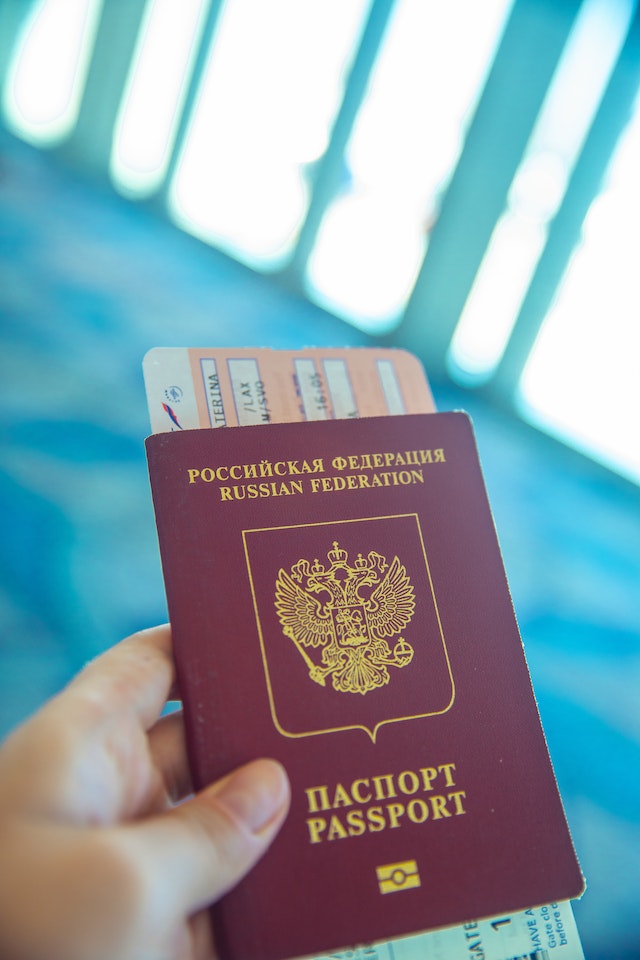
Travel Abroad as a Convicted Felon
Traveling abroad as a convicted felon can be a challenging experience. It is essential to understand the laws and regulations of the country you plan to visit to avoid any legal issues. In this section, we will discuss the travel restrictions for felons and the requirements for traveling to Canada, Australia, and the UK.
Travel to Canada
Canada has strict laws regarding felons’ entry into the country. If you have a criminal record, you may be deemed inadmissible to Canada, and your entry may be denied. However, some felons may be eligible to enter Canada if they meet certain requirements, such as obtaining a Temporary Resident Permit (TRP) or Rehabilitation.
Travel to Australia
Australia also has stringent laws regarding felons’ entry into the country. If you have a criminal record, you may be denied entry into Australia. However, some felons may be eligible for a visa if they meet certain requirements, such as obtaining a Character Requirement Waiver or a Special Purpose Visa.
Travel to the UK
The UK has strict laws regarding felons’ entry into the country. If you have a criminal record, you may be denied entry into the UK. However, some felons may be eligible for a visa if they meet certain requirements, such as obtaining a Rehabilitation Certificate or a Temporary Admission Permit.
Visa Requirements
It is essential to understand the visa requirements for the country you plan to visit. Some countries may require a visa for felons, while others may not. It is crucial to research the visa requirements and application process well in advance of your trip to avoid any potential issues.
In conclusion, traveling abroad as a convicted felon can be a complex process. It is essential to research the laws and regulations of the country you plan to visit and understand the visa requirements to avoid any legal issues.
Legal Advice and Assistance
Individuals with a criminal record may face challenges when applying for a passport. While there is no law that prohibits a felon from obtaining a passport, certain circumstances may lead to a denial of the application. It is important to seek legal advice and assistance to understand the potential hurdles and how to overcome them.
An experienced attorney can provide guidance on the eligibility requirements and help navigate the application process. They can also advise on any legal issues that may arise, such as outstanding warrants or probation violations. A lawyer can also help with the restoration of civil rights, which may improve the chances of obtaining a passport.
Legal advice can also be obtained from non-profit organizations that specialize in helping individuals with criminal records. These organizations may provide free or low-cost legal services and can help with the preparation of the passport application.
It is important to note that legal advice and assistance can be crucial in ensuring a successful passport application. By seeking the help of an attorney or non-profit organization, individuals with criminal records can increase their chances of obtaining a passport and avoid potential legal issues.
Frequently Asked Questions
What countries can convicted felons travel to?
Travel restrictions for convicted felons vary depending on the country. Some countries have no restrictions while others have strict requirements for entry. It is recommended that felons check with the embassy of the country they plan to visit for specific travel requirements.
Can a felon get a passport in Florida?
Yes, felons can apply for a passport in Florida. However, their application may be denied if they are currently in prison, on parole, or on probation. Additionally, if the felony conviction is related to drug trafficking or a sex crime involving a minor, the passport application may be denied.
What disqualifies you from getting a passport?
Felony convictions related to drug trafficking or sex crimes involving minors may disqualify an individual from getting a passport. Additionally, if an individual owes more than $2,500 in child support payments, their passport application may be denied.
Can a felon go on a cruise?
Cruise lines have their own policies regarding felons on board. Some cruise lines allow felons to travel while others do not. It is recommended that felons check with the specific cruise line they plan to travel with for their policy on felons.
What countries will not allow felons?
Some countries have strict entry requirements for felons and may deny entry altogether. These countries include Canada, China, and the United Arab Emirates. It is recommended that felons check with the embassy of the country they plan to visit for specific entry requirements.
Can felons travel internationally?
Felons can travel internationally as long as they meet the entry requirements of the country they plan to visit. It is recommended that felons check with the embassy of the country they plan to visit for specific travel requirements.
Publix Passport: Everything You Need to Know
Publix Passport is an online portal designed for Publix associates to access important information at their convenience. With Publix Passport, associates can easily manage their work schedules, view pay stubs, and access benefits information. This platform is available to all Publix employees, whether they work in the stores or at the corporate office.
Logging into Publix Passport is a straightforward process. Associates can access the portal from any device with an internet connection, including smartphones and tablets. Once logged in, users are greeted with a dashboard that provides quick access to important information. From here, associates can view their schedules, check their pay stubs, and access benefits information with just a few clicks.
Understanding how to use Publix Passport is essential for all associates, as it can help streamline their work-related tasks and save them time. Whether it’s checking their schedules, managing their benefits, or accessing important company information, Publix Passport is a valuable tool that can help associates stay organized and informed.
Key Takeaways
- Publix Passport is an online portal designed for Publix associates to access important information at their convenience.
- Logging into Publix Passport is a straightforward process, and associates can access the portal from any device with an internet connection.
- Understanding how to use Publix Passport is essential for all associates, as it can help streamline their work-related tasks and save them time.
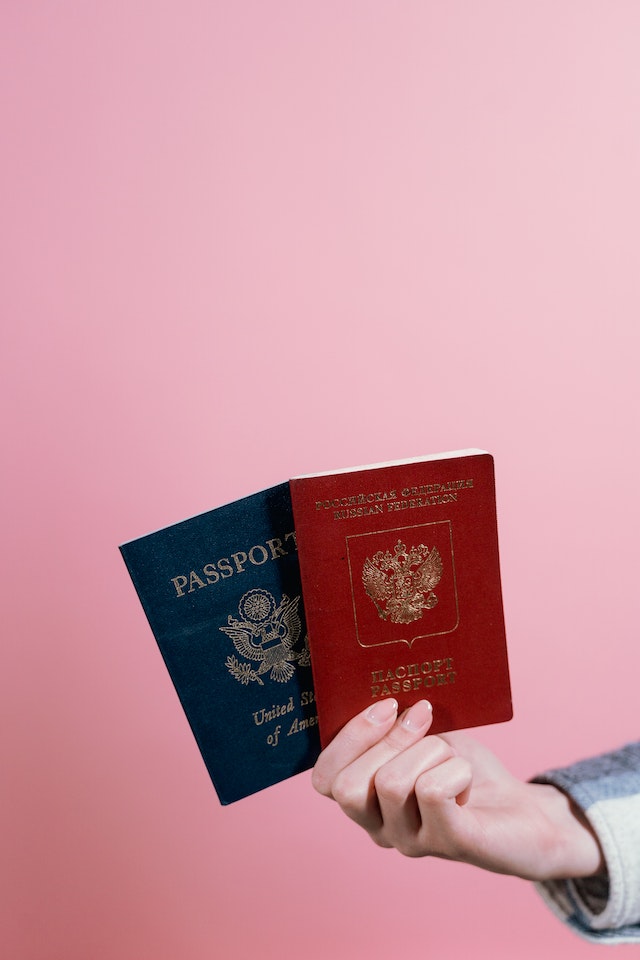
Logging Into Publix Passport
Using Web Browser
To log in to Publix Passport using a web browser, follow these steps:
- Open your preferred web browser and visit the Publix Passport login page.
- Enter your Publix username and password in the appropriate fields.
- Click the “Log In” button.
If you encounter any errors during the login process, double-check that you have entered your login credentials correctly. If you are still having trouble, you may need to reset your password or contact your manager for assistance.
Via Mobile App
To log in to Publix Passport using the mobile app, follow these steps:
- Download and install the Publix Passport app on your mobile device.
- Open the app and enter your Publix username and password in the appropriate fields.
- Tap the “Log In” button.
If you encounter any errors during the login process, double-check that you have entered your login credentials correctly. If you are still having trouble, you may need to reset your password or contact your manager for assistance.
Overall, logging in to Publix Passport is a straightforward process whether you are using a web browser or the mobile app. Just be sure to enter your login credentials correctly and follow any additional instructions or prompts that may appear.
Navigating the Dashboard
The Publix Passport dashboard provides employees with a comprehensive overview of their work schedule, company news, and communication channels. By logging into the dashboard, employees can access important information about their work schedule, view available shifts, and communicate with their colleagues and managers.
One of the most useful features of the dashboard is the availability section, which allows employees to set their availability for upcoming shifts. This feature helps managers to schedule shifts more efficiently and ensures that employees are not scheduled for shifts that conflict with their personal commitments.
The schedules section of the dashboard provides employees with a detailed overview of their work schedule, including the time and location of each shift. Employees can also view their upcoming shifts in a calendar format, making it easy to plan ahead and schedule personal commitments around work.
The company news section of the dashboard provides employees with the latest news and updates from Publix. This section is regularly updated with important information about company policies, events, and initiatives, keeping employees informed and engaged with the company.
Finally, the communication section of the dashboard provides employees with a variety of communication channels, including email, chat, and video conferencing. This feature allows employees to communicate with their colleagues and managers in real-time, improving collaboration and productivity.
Overall, the Publix Passport dashboard is a powerful tool for employees, providing them with easy access to important information and communication channels. By taking advantage of the features available on the dashboard, employees can improve their productivity, stay informed about company news, and communicate more effectively with their colleagues and managers.
Understanding Payroll and Benefits
Publix Passport provides its employees with a comprehensive payroll and benefits system that allows them to easily access their pay stubs, taxes, and employee benefits. Here are some key things to know about understanding payroll and benefits through Publix Passport.
Viewing Pay Stubs
Employees can view their pay stubs through the Publix Passport website. To access their pay stubs, they need to log in to their account and navigate to the “Pay” section. From there, they can view their current and past pay stubs, as well as any deductions that have been taken out of their pay.
Pay stubs provide important information about an employee’s pay, including their gross pay, net pay, and any taxes that have been withheld. Employees should review their pay stubs regularly to ensure that they are being paid correctly and that there are no errors or discrepancies.
Accessing Employee Benefits
Publix Passport also provides employees with access to a range of employee benefits, including health insurance, retirement plans, and more. To access their benefits, employees can log in to their account and navigate to the “Benefits” section.
From there, they can view their current benefits and make changes to their coverage as needed. For example, employees can enroll in health insurance or change their coverage level during open enrollment periods.
It’s important for employees to understand the benefits that are available to them and to take advantage of them as needed. By doing so, they can ensure that they have the coverage they need to stay healthy and financially secure.
Overall, Publix Passport’s payroll and benefits system is designed to make it easy for employees to access the information they need about their pay and benefits. By taking advantage of these tools, employees can stay informed and make the most of their employment at Publix.
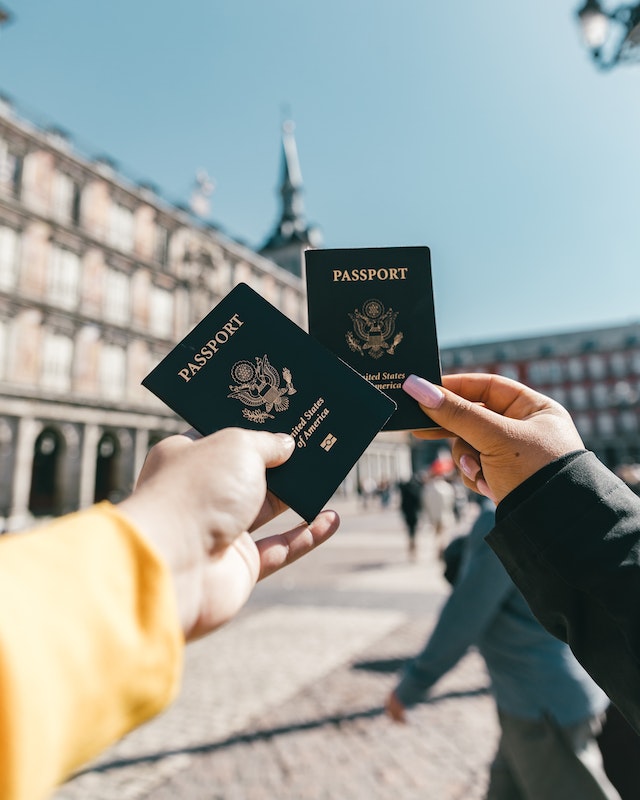
Password Recovery
If a user forgets their Publix Passport password, they can easily recover it by following a few simple steps. The password recovery process is straightforward and can be completed in just a few minutes.
To recover a forgotten password, the user must first navigate to the Publix Passport login page. From there, they should click on the “Forgot Password” link located beneath the login button. This will take them to the password recovery page.
On the password recovery page, the user will be prompted to enter their Publix Passport username or employee ID. After entering this information, they will need to complete a CAPTCHA to verify that they are not a robot. Once the CAPTCHA is completed, the user can click on the “Next” button to proceed.
The next step in the password recovery process is to verify the user’s identity. The user will be asked to answer a series of security questions that they previously set up when creating their Publix Passport account. These questions are designed to ensure that only the account owner can access their account.
If the user answers the security questions correctly, they will be prompted to create a new password. The new password must meet certain requirements, such as being at least eight characters long and containing at least one uppercase letter, one lowercase letter, and one number.
Once the user has created a new password, they can use it to log in to their Publix Passport account. It is important to remember to keep the new password secure and not share it with anyone else.
In summary, recovering a forgotten Publix Passport password is a simple process that can be completed in just a few minutes. By following the steps outlined above, users can quickly and easily regain access to their accounts.
Publix Passport for Associates
Publix Passport is an online portal designed for Publix associates to manage their work-related information. It is a secure platform that allows associates to access their work schedules, pay stubs, and other important details from anywhere and at any time.
Through Publix Passport, associates can view their work schedules, request time off, and swap shifts with other associates. This makes it easier for them to manage their work-life balance and plan their personal commitments accordingly.
In addition to scheduling, associates can also use Publix Passport to update their personal information such as contact details, emergency contacts, and direct deposit information. Any changes made to this information are reflected immediately in the system, ensuring that associates’ information is always up-to-date.
Overall, Publix Passport is a convenient tool that helps associates manage their work-related information efficiently. It provides easy access to important details, making it easier for associates to plan their work schedules and personal commitments.
Publix Delivery Services
Publix offers a variety of delivery services to make shopping more convenient for its customers. These services include curbside pickup, Instacart convenience virtual store, and Publix Liquors.
Curbside Pickup
Publix offers a curbside pickup service where customers can place their orders online and have them brought to their cars when they arrive at the store. This service is available at select Publix locations and can be accessed through the Publix website or mobile app. Customers can choose from a wide range of products, including groceries, household items, and more. The service is free, and there is no minimum order requirement.
Instacart Convenience Virtual Store
Publix has partnered with Instacart to offer an Instacart Convenience Virtual Store. This service allows customers to order groceries online and have them delivered to their doorstep. Customers can choose from a wide range of products, including fresh produce, meat, dairy, and more. The service is available in select areas and can be accessed through the Instacart website or mobile app. Fees and item prices may vary depending on the location and the items ordered.
Publix Liquors
Publix Liquors is a delivery service that offers a wide range of alcoholic beverages, including beer, wine, and spirits. Customers can place their orders online and have them delivered to their doorstep. The service is available in select areas and can be accessed through the Publix website or mobile app. Fees and item prices may vary depending on the location and the items ordered.
In conclusion, Publix offers a variety of delivery services to make shopping more convenient for its customers. These services include curbside pickup, Instacart convenience virtual store, and Publix Liquors. Customers can choose the service that best meets their needs and enjoy the convenience of having their orders delivered to their doorstep.
Using Publix Passport on Different Platforms
On a Computer
Publix Passport can be accessed on a computer by logging in to the Publix associate portal. This platform allows associates to view their pay stubs, work schedules, and other important information. To access Publix Passport on a computer, follow these steps:
- Visit the Publix associate portal website.
- Enter your Publix user ID and password.
- Click on the “Publix Passport” button.
- You will be directed to the Publix Passport homepage, where you can access your information.
Android
Publix Passport can be accessed on Android devices via the Publix Passport app. This app is available for free on the Google Play Store and can be downloaded on any Android device. The app allows associates to view their pay stubs, work schedules, and other important information. To access Publix Passport on an Android device, follow these steps:
- Download the Publix Passport app from the Google Play Store.
- Open the app and enter your Publix user ID and password.
- You will be directed to the Publix Passport homepage, where you can access your information.
App Store
Publix Passport can also be accessed on iOS devices via the Publix Passport app. This app is available for free on the App Store and can be downloaded on any iPhone or iPad. The app allows associates to view their pay stubs, work schedules, and other important information. To access Publix Passport on an iOS device, follow these steps:
- Download the Publix Passport app from the App Store.
- Open the app and enter your Publix user ID and password.
- You will be directed to the Publix Passport homepage, where you can access your information.
Overall, Publix Passport is accessible on multiple platforms, including computers, Android devices, and iOS devices. Associates can access their important information with ease, making it convenient to stay up-to-date with their work schedules and pay stubs.
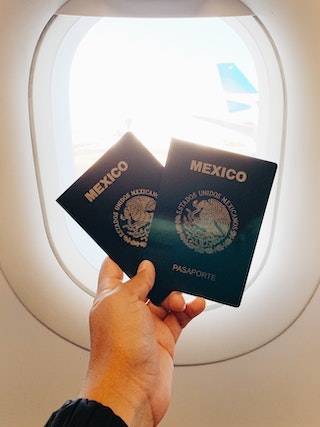
Privacy and Data Collection
Publix Passport collects various types of data from its customers, including personal information, purchase history, and browsing behavior. The company takes privacy and data protection seriously and has implemented several measures to ensure that customer data is kept safe and secure.
When customers make purchases in-store, Publix collects data such as the items purchased, the time and date of the transaction, and the payment method used. This data is used to improve the customer experience, personalize marketing efforts, and optimize inventory management.
Publix also collects data from customers who use its website and mobile app. This data includes browsing behavior, search queries, and account information. The company uses this data to improve its online services, personalize the customer experience, and optimize marketing efforts.
To protect customer data, Publix has implemented several security measures, including encryption, firewalls, and access controls. The company also regularly reviews its data privacy policies and procedures to ensure compliance with relevant laws and regulations.
Overall, Publix takes customer privacy and data protection seriously and strives to provide a safe and secure shopping experience for its customers.
Dealing with Delays and Errors
Dealing with delays and errors can be frustrating, but it’s important to know how to handle them when they occur. Here are some tips on what to do when you encounter delays or errors while using Publix Passport.
Delays
If you experience delays while using Publix Passport, there are a few things you can do to try and resolve the issue. First, check your internet connection to make sure it’s stable and strong. Slow internet can cause delays and errors when using Publix Passport.
If your internet connection is not the issue, try logging out of Publix Passport and then logging back in. This can sometimes reset the system and fix any delays or errors you may be experiencing.
If you continue to experience delays, contact the Publix Passport support team. They can help you troubleshoot the issue and find a solution.
Errors
Errors can also occur when using Publix Passport. If you encounter an error message, take note of the error code or message and try to replicate the issue. This can help you identify the cause of the error and find a solution.
If the error persists, try logging out of Publix Passport and then logging back in. This can sometimes fix the error and allow you to continue using the system.
If the error continues, contact the Publix Passport support team. They can help you troubleshoot the issue and find a solution.
In conclusion, dealing with delays and errors while using Publix Passport can be frustrating, but there are steps you can take to resolve the issue. By checking your internet connection, logging out and back in, and contacting support, you can ensure a smooth experience with Publix Passport.
Maximizing Savings and Perks
Publix Passport offers numerous ways to save money and enjoy perks while shopping at Publix. By taking advantage of these benefits, customers can get the most out of their shopping experience.
One of the most significant ways to save money is by using digital coupons available on the Publix app or website. These coupons can be clipped and applied to purchases during checkout, providing instant savings. Customers can also sign up for Publix’s weekly ad emails, which highlight current sales and promotions. By planning their shopping trips around these deals, customers can save even more money.
Another way to save money is by using the Publix pharmacy. Customers can receive up to a 90-day supply of select generic medications for $7.50, making it an affordable option for those in need. Additionally, customers can earn a $10 Publix gift card for every five prescriptions filled using the Publix pharmacy.
Publix also offers perks for its customers, such as the Publix Baby Club. By joining this club, customers can receive free items, coupons, and parenting tips. Another perk is the Publix Aprons Cooking School, which offers cooking classes and events for customers interested in expanding their culinary skills.
In addition to these benefits, Publix Passport also offers a rewards program called Publix Rewards. By signing up for this program, customers can earn points for every dollar spent at Publix. These points can be redeemed for discounts on future purchases, providing even more savings.
Overall, by taking advantage of digital coupons, weekly sales, pharmacy discounts, rewards programs, and other perks, customers can maximize their savings and enjoy a more rewarding shopping experience at Publix.
Getting Support
Publix Passport provides excellent customer support to its users. In case of any issues, users can contact the support team via email, phone, or Twitter.
Email Support
Users can reach out to the Publix Passport support team via email for any queries or issues related to their account. The support team is prompt in responding to emails, and users can expect a resolution within a reasonable time frame. Users can send an email to the support team at support@publix.com.
Phone Support
Publix Passport also provides phone support to its users. Users can call the support team at 1-800-242-1227 for any assistance related to their account. The support team is available from Monday to Friday, 8:00 AM to 7:00 PM EST, and on Saturdays, 9:00 AM to 4:00 PM EST.
Twitter Support
Users can also reach out to the Publix Passport support team via Twitter. Users can tweet their queries or issues to @PublixHelps, and the support team will respond to them promptly.
Overall, Publix Passport provides excellent customer support to its users, and users can expect a resolution to their queries or issues in a timely manner.
Frequently Asked Questions
What is Publix Passport and how do I access it?
Publix Passport is an online portal for Publix employees to access their personal information, work schedule, pay stubs, and more. To access Publix Passport, employees must first register for an account through the Publix Passport website.
How do I log into my Publix Passport?
To log into Publix Passport, employees must visit the Publix Passport website and enter their login credentials, which include their Publix user ID and password. If an employee forgets their login information, they can reset their password or contact their manager for assistance.
What should I do if my Publix Passport is not working?
If an employee is having issues with their Publix Passport account, they should first try clearing their browser cache and cookies, or try logging in from a different browser or device. If the issue persists, employees can contact the Publix Help Desk for assistance.
Is there a Publix Passport app available?
Yes, there is a Publix Passport app available for download on both the App Store and Google Play. The app allows employees to access their Publix Passport account on-the-go, view their work schedule, and receive alerts for important updates.
How do I view my Publix work schedule?
Employees can view their Publix work schedule by logging into their Publix Passport account and clicking on the “Schedule” tab. From there, they can view their upcoming shifts, request time off, and swap shifts with other employees.
Can I upload my passport photo to Publix Passport?
No, employees cannot upload their passport photo to Publix Passport. The passport photo is used for identification purposes and must be taken at a Publix location during the hiring process. If an employee needs to update their passport photo, they should contact their manager for assistance.
Luxury Travel for Moms: Top Destinations and Tips
Luxury travel has become increasingly popular in recent years, with more and more people seeking out high-end experiences and accommodations for their vacations. For busy moms, the idea of a luxury vacation can be especially appealing, offering a chance to relax and recharge while enjoying the finer things in life. This is where the concept of a “luxury travel mom” comes in – a woman who prioritizes luxury and quality in her family vacations.
Luxury Travel Mom is a term used to describe a woman who is passionate about luxury travel and seeks out the best experiences for herself and her family. These moms are often well-traveled and knowledgeable about the best destinations, accommodations, and activities for families looking for a high-end vacation. They may also have tips and advice on how to budget for luxury travel and make the most of their vacation time.
Whether it’s a beach vacation at a five-star resort, a ski trip to a luxury chalet, or a safari adventure in Africa, luxury travel moms are always on the lookout for the best experiences for their families. They may also be interested in travel fashion and how to dress for a luxury vacation, as well as tips for dealing with PR in the luxury travel industry. With their expertise and passion for luxury travel, these moms are a valuable resource for anyone looking to plan a high-end family vacation.
Key Takeaways
- Luxury travel moms prioritize luxury and quality in their family vacations.
- They are knowledgeable about the best destinations, accommodations, and activities for high-end family vacations.
- Luxury travel moms can provide valuable tips and advice on budgeting for luxury travel and making the most of vacation time.
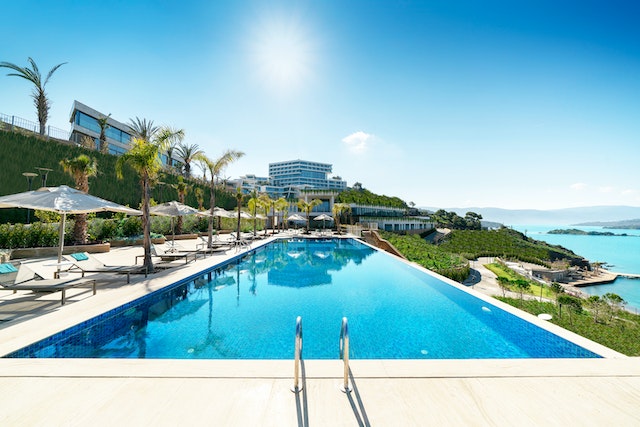
Luxury Travel Mom
Luxury Travel Mom is a well-known luxury blogger and honest review site that provides its readers with valuable insights into the world of luxury travel. The site was founded by Kim-Marie Evans, a travel enthusiast who has been featured in numerous publications for her expertise in luxury travel.
Kim-Marie’s blog and review site offer honest and positive reviews of luxury hotels, resorts, and destinations around the world. She is known for her neutral and clear writing style, which makes it easy for readers to understand and trust her recommendations.
Luxury Travel Mom is a go-to resource for families looking to travel in style. Kim-Marie understands the unique needs of families and provides helpful tips and recommendations for traveling with children. She also offers insider information on the best luxury travel deals and promotions.
Whether you’re planning a romantic getaway or a family vacation, Luxury Travel Mom has something for everyone. With its knowledgeable and confident approach to luxury travel, it’s no wonder why this site has become a trusted resource for travelers around the world.
Destinations
Luxury Travel Mom has handpicked some of the best destinations for luxury travel. From the pristine beaches of Hawaii to the charming towns in Europe, there is no shortage of lavish experiences to be had.
Hawaii
Hawaii is a top destination for luxury travel, with its stunning beaches, crystal clear waters, and lush tropical landscapes. Visitors can indulge in world-class spas, fine dining, and luxurious accommodations. The Four Seasons Resort Hualalai is a popular choice for those seeking a secluded and opulent getaway.
Caribbean
The Caribbean is a playground for the rich and famous, with its turquoise waters, white sandy beaches, and warm tropical climate. St. Barts is a popular destination for luxury travel, with its chic boutiques, gourmet restaurants, and lavish villas.
Europe
Europe offers a wealth of luxurious experiences, from the charming streets of Paris to the stunning coastlines of the Amalfi Coast. The Ritz-Carlton in Paris is a classic choice for those seeking old-world glamour, while the Belmond Hotel Caruso in Italy offers breathtaking views of the Mediterranean.
Asia
Asia is a land of contrasts, with bustling cities and serene natural landscapes. The Aman Tokyo is a top choice for luxury travel in Japan, with its sleek design and stunning views of the city skyline. In Bali, the Four Seasons Resort Bali at Sayan offers guests a peaceful retreat in the heart of the jungle.
Montana
Montana may not be the first destination that comes to mind when thinking of luxury travel, but it offers a unique and unforgettable experience. The Ranch at Rock Creek is a luxury ranch resort that offers guests the chance to experience the great outdoors in style, with activities such as fly fishing, horseback riding, and spa treatments.
Luxury Travel Mom has carefully curated this list of destinations to provide travelers with unforgettable experiences. Whether seeking relaxation or adventure, these destinations offer the best in luxury travel.

Accommodations
Luxury Travel Mom understands that accommodations can make or break a trip. That’s why they recommend only the best hotels and resorts for their readers.
Hotels
When it comes to hotels, Luxury Travel Mom suggests staying at the Ritz Carlton. With locations all around the world, the Ritz Carlton is known for its exceptional service and luxurious amenities. From plush bedding to gourmet dining options, guests will feel pampered from the moment they arrive.
Resorts
For those looking for a more immersive experience, Luxury Travel Mom recommends the Resort at Paws Up. Located in Montana, this resort offers guests the chance to disconnect from the hustle and bustle of everyday life and reconnect with nature. With activities such as horseback riding, fly fishing, and hot air balloon rides, guests will never run out of things to do. And with luxurious accommodations such as private homes and glamping tents, guests can enjoy the great outdoors without sacrificing comfort.
Overall, whether you’re looking for a high-end hotel or a secluded resort, Luxury Travel Mom has got you covered.
Travel Advice
Luxury Travel Mom offers valuable travel advice to make your vacation a memorable one. The company’s team of experts provides personalized recommendations for accommodations, activities, and dining options to suit your preferences.
When planning your trip, it’s important to consider the destination’s weather, local customs, and current events. Luxury Travel Mom can provide insight into these factors to help you make informed decisions.
For those who want a stress-free vacation, Luxury Travel Mom offers vacation consigliere services. This includes a dedicated travel advisor who will handle all aspects of your trip, from booking flights and accommodations to arranging activities and transportation.
To ensure a smooth travel experience, it’s recommended to pack light and bring only the essentials. Luxury Travel Mom can provide packing tips and recommendations for travel gear to make your journey more comfortable.
When traveling internationally, it’s important to have the necessary documentation, such as a valid passport and visa. Luxury Travel Mom can assist with obtaining these documents and provide information on any required vaccinations.
Overall, Luxury Travel Mom’s travel advice and vacation consigliere services can help you plan a stress-free and enjoyable vacation.
Family Vacation
Luxury Travel Mom understands that family vacations are a special time to bond and create memories that will last a lifetime. That’s why they offer an array of family-friendly luxury travel options that cater to the needs of both parents and children.
From beach resorts to ski lodges, Luxury Travel Mom has carefully curated a selection of destinations that offer something for everyone. Families can enjoy activities such as snorkeling, hiking, and horseback riding, or simply relax by the pool while the kids are entertained by on-site children’s programs.
While some luxury travel companies may offer mediocre experiences for families, Luxury Travel Mom goes above and beyond to ensure that every member of the family has an unforgettable vacation. They work with top-rated hotels and resorts to provide amenities such as kid-friendly menus, babysitting services, and family suites.
Luxury Travel Mom also understands that traveling with children can be stressful, which is why they offer personalized travel planning services to ensure that every detail of the trip is taken care of. From arranging transportation to booking excursions, they handle everything so that families can focus on enjoying their time together.
Overall, Luxury Travel Mom is the perfect choice for families who want to experience luxury travel without sacrificing the needs of their children. With their expertise and attention to detail, families can rest assured that their vacation will be a once-in-a-lifetime experience.

Luxury Vacation Activities
Luxury travel moms know that a vacation is not just about relaxing on a beach or by the pool. It’s about experiencing new things and creating unforgettable memories. Here are some of the top luxury vacation activities that are sure to impress.
Helicopter Rides
For a truly unique and breathtaking experience, a helicopter ride is a must-do activity on any luxury vacation. Take in the stunning views from above and see the world like never before. Whether it’s soaring over the Grand Canyon or flying over the city skyline at sunset, a helicopter ride is an unforgettable experience that will leave you in awe.
Surfing Lessons
For those looking for a more active and adventurous vacation, surfing lessons are a great way to get out on the water and experience the thrill of the waves. Learn from expert instructors and ride the waves like a pro. Whether you’re a beginner or an experienced surfer, there are plenty of luxury destinations that offer top-notch surfing lessons and experiences.
Fly Fishing
For those who prefer a more relaxed and tranquil activity, fly fishing is a great option. Enjoy the peacefulness of the water and the beauty of nature while you try your hand at catching some of the world’s most sought-after fish. With luxury resorts and lodges that offer expert guides and top-of-the-line equipment, fly fishing is a great way to unwind and enjoy the great outdoors.
No matter what your interests or preferences may be, luxury travel moms know that there is an activity out there that will make your vacation truly unforgettable. From helicopter rides to surfing lessons to fly fishing, these luxury vacation activities are sure to impress and create memories that will last a lifetime.
Travel Fashion
Luxury travel moms know that looking good while on vacation is important. They want to make sure they are dressed appropriately for any occasion, whether it’s a fancy dinner or a day at the beach. Here are some fashion tips for luxury travel moms.
Dresses
Dresses are a great option for luxury travel moms. They are comfortable, easy to pack, and can be dressed up or down depending on the occasion. A maxi dress is perfect for a beach vacation, while a little black dress is great for a fancy dinner.
Jeans
Jeans are a staple in any wardrobe, and they are perfect for travel. Luxury travel moms should opt for a pair of comfortable, stretchy jeans that can be dressed up or down. Dark wash jeans are a great option, as they can be worn with a nice blouse for a night out or a t-shirt for a casual day of sightseeing.
Water Shoes
Water shoes are a must-have for any beach vacation. They protect your feet from sharp rocks and shells, and they are perfect for walking on hot sand. Luxury travel moms should look for a pair of water shoes that are both stylish and functional.
Sneakers
Sneakers are perfect for a day of sightseeing. They are comfortable and practical, and they can be worn with jeans or shorts. Luxury travel moms should opt for a pair of white sneakers, as they are versatile and can be dressed up or down.
Hats
Hats are a great accessory for any vacation. They protect your face from the sun and can add a stylish touch to any outfit. Luxury travel moms should look for a wide-brimmed hat that provides plenty of shade.
That’s it for our travel fashion tips for luxury travel moms. Remember, it’s important to feel comfortable and confident while on vacation, so choose outfits that make you feel your best.
Budgeting for Luxury Travel
Luxury travel is often associated with high costs. However, with proper planning and budgeting, it is possible to enjoy a luxurious vacation without breaking the bank. Here are some tips for budgeting for luxury travel:
Determine Your Budget
The first step in budgeting for luxury travel is to determine how much you can afford to spend. This will depend on your personal financial situation and priorities. Consider how much you are willing to spend on transportation, accommodations, food, activities, and souvenirs. Be realistic and set a budget that you can stick to.
Look for Deals and Discounts
Luxury travel does not have to mean paying full price. Look for deals and discounts on flights, hotels, and activities. Subscribe to travel newsletters and follow luxury travel bloggers on social media to stay up-to-date on the latest deals. Consider traveling during the off-season or shoulder season when prices may be lower.
Prioritize Your Spending
When budgeting for luxury travel, it is important to prioritize your spending. Determine what is most important to you and allocate your budget accordingly. For example, if you value luxurious accommodations, consider staying in a high-end hotel but opt for budget-friendly meals and activities. If you prefer to splurge on activities, look for more affordable accommodations.
Consider Alternative Accommodations
Luxury travel does not always mean staying in a five-star hotel. Consider alternative accommodations such as vacation rentals, bed and breakfasts, or boutique hotels. These options may offer unique experiences and amenities at a lower cost.
Use Credit Card Rewards
Many credit cards offer rewards programs that can be used to offset the cost of travel. Look for credit cards that offer travel rewards such as airline miles or hotel points. Use these rewards to pay for flights, accommodations, or activities.
By following these tips, it is possible to enjoy a luxurious vacation without overspending. With proper planning and budgeting, anyone can experience the luxury of travel.
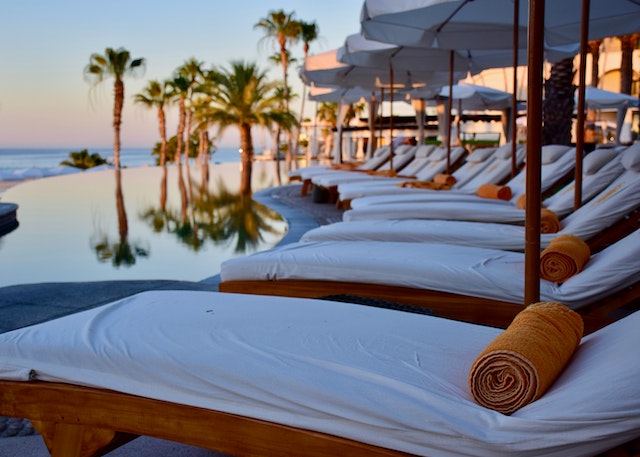
PR in Luxury Travel
In the world of luxury travel, public relations (PR) plays a crucial role in shaping the perception of a brand. Effective PR can help a luxury travel company build a positive reputation, attract new customers, and retain existing ones. Here are some key aspects of PR in luxury travel:
Building Relationships
One of the most important aspects of PR in luxury travel is building relationships with key stakeholders. This includes journalists, bloggers, influencers, and other media professionals who can help promote the brand. Luxury travel companies often work with PR agencies to develop relationships with these stakeholders and get their brand in front of the right people.
Creating Compelling Content
Another important aspect of PR in luxury travel is creating compelling content that tells a story and engages the audience. This can include press releases, blog posts, social media content, and more. Luxury travel companies need to create content that is visually appealing, informative, and entertaining to capture the attention of their target audience.
Managing Reputation
PR in luxury travel also involves managing the brand’s reputation. This includes monitoring social media channels, responding to customer feedback, and addressing any negative comments or reviews. Luxury travel companies need to be proactive in managing their reputation to ensure that their brand remains strong and positive.
Collaborating with Influencers
Influencer marketing has become a popular way for luxury travel companies to reach new audiences. PR professionals work with influencers to create content that showcases the brand’s products and services in a positive light. This can include sponsored posts, social media takeovers, and more.
Overall, PR is an essential component of luxury travel marketing. By building relationships, creating compelling content, managing reputation, and collaborating with influencers, luxury travel companies can build a strong brand and attract new customers.
Space Travel
Luxury Travel Mom has always been at the forefront of providing unique and unforgettable travel experiences. With the recent developments in space tourism, Luxury Travel Mom is excited to offer its clients an opportunity to explore the final frontier.
Space travel is no longer a distant dream reserved for astronauts and scientists. With companies like Virgin Galactic and Blue Origin, space tourism is becoming a reality. Luxury Travel Mom is partnering with these companies to provide its clients with an out-of-this-world experience.
Travelers will be able to experience weightlessness, see the curvature of the Earth, and witness the vastness of space. The journey will begin with a comprehensive training program to ensure the safety and comfort of all passengers.
The experience will include a tour of the spacecraft, a pre-flight briefing, and a chance to meet the pilots and crew. Passengers will also receive a personalized space suit and a commemorative flight certificate.
Luxury Travel Mom understands that space travel is not for everyone, but for those who are looking for a once-in-a-lifetime experience, it is an opportunity not to be missed. Contact Luxury Travel Mom to learn more about this exciting new travel option.
Frequently Asked Questions
What are some luxurious vacation destinations for families?
Luxury travel isn’t just for adults. Many destinations offer luxurious experiences that cater to families. Some popular options include Disney’s Aulani resort in Hawaii, Atlantis Bahamas, and the Four Seasons Resort in Costa Rica. These destinations offer amenities such as kids’ clubs, water parks, and family-friendly activities.
What are some tips for solo travelers looking for luxury travel experiences?
Solo luxury travel can be an amazing experience, but it can also be intimidating. To ensure a great trip, solo travelers should consider staying at a luxury hotel with excellent concierge services. They should also look for destinations with activities that cater to solo travelers, such as cooking classes or guided tours. Finally, solo travelers should be open to meeting new people and trying new things.
How can you find deals on luxury travel accommodations?
Finding deals on luxury travel accommodations can be challenging, but it’s not impossible. One option is to sign up for loyalty programs offered by luxury hotel chains. Another option is to book during the off-season or look for last-minute deals. Finally, travelers should consider using a travel agent who specializes in luxury travel to find the best deals.
What are some must-have items for a luxury travel experience?
When packing for a luxury travel experience, it’s important to bring items that will enhance the experience. Some must-have items include comfortable shoes for exploring, a high-quality camera for capturing memories, and a travel pillow for long flights. Additionally, travelers should consider bringing their favorite luxury toiletries and a good book for relaxing by the pool.
What are some unique luxury travel experiences that most people don’t know about?
Luxury travel experiences go beyond five-star hotels and fine dining. Some unique options include staying in a treehouse in Costa Rica, taking a hot air balloon ride over the Serengeti, or embarking on a luxury yacht cruise in the Galapagos Islands. These experiences offer a once-in-a-lifetime opportunity to explore new destinations in a luxurious way.
What are some common misconceptions about luxury travel and how can they be debunked?
One common misconception about luxury travel is that it’s only for the wealthy. While luxury travel can be expensive, there are options for travelers of all budgets. Another misconception is that luxury travel is stuffy and formal. In reality, luxury travel can be as relaxed or as formal as the traveler wants it to be. Finally, some people believe that luxury travel is wasteful and environmentally unfriendly. However, many luxury hotels and tour operators are committed to sustainable practices and minimizing their impact on the environment.
Toddler Travel Bed: A Guide to Choosing the Best Option for Your Child
Toddler travel beds are a convenient and comfortable option for parents who frequently travel with their young children. These portable beds are designed to provide a safe and familiar sleeping space for toddlers, no matter where they go. Whether you are planning a family vacation, a weekend getaway, or just a visit to grandma’s house, a toddler travel bed can make the trip more enjoyable and less stressful for everyone involved.
Understanding Toddler Travel Beds
Toddler travel beds come in a variety of shapes, sizes, and styles, so it’s important to choose one that meets your specific needs. Some beds are inflatable, while others fold up for easy transport. Some are designed to fit in a standard suitcase, while others come with their own carrying case. When choosing a toddler travel bed, you’ll want to consider factors like your child’s age and size, the length of your trip, and the type of accommodations you’ll be staying in.
Key Features to Consider
When shopping for a toddler travel bed, there are several key features to consider. Look for a bed that is lightweight and easy to carry, but also sturdy and durable. Make sure it is easy to set up and take down, and that it comes with a comfortable mattress and bedding. Consider whether you want a bed that can be used both indoors and outdoors, and whether you need one with built-in safety features like rails or bumpers. Finally, think about your budget and choose a bed that offers the best value for your money.
Key Takeaways
- Toddler travel beds are a convenient and comfortable option for parents who travel frequently with their young children.
- When choosing a toddler travel bed, it’s important to consider factors like your child’s age and size, the length of your trip, and the type of accommodations you’ll be staying in.
- Look for a bed that is lightweight, easy to set up and take down, comes with a comfortable mattress and bedding, and offers good value for your money.

Understanding Toddler Travel Beds
Toddler travel beds are portable sleeping solutions designed for toddlers who are too big for a crib but still too small for a regular bed. They are perfect for families who are always on the go and need a comfortable and safe place for their little ones to sleep while traveling.
Toddler travel beds come in different shapes, sizes, and styles. Some are inflatable, while others are foldable or have built-in frames. They can be made of various materials such as foam, plastic, or fabric. The most important thing to consider when choosing a toddler travel bed is safety. It should be sturdy, stable, and have high sides to prevent the child from falling off.
Another important factor to consider is comfort. A good toddler travel bed should have a soft and supportive mattress that is easy to clean. It should also be lightweight and easy to carry around.
When shopping for a toddler travel bed, it is essential to check the weight limit and age range. Some beds are suitable for toddlers up to three years old, while others can accommodate older children. It is also important to read reviews and check the product’s safety certifications to ensure that it meets the required standards.
Overall, toddler travel beds are a convenient and practical solution for families who love to travel. They provide a safe and comfortable sleeping environment for toddlers while on the go.
Types of Toddler Travel Beds
When it comes to choosing a toddler travel bed, there are several types to choose from. Each type has its own advantages and disadvantages, and it’s important to consider your specific needs before making a purchase. Here are some of the most common types of toddler travel beds:
Inflatable Toddler Travel Beds
Inflatable toddler travel beds are a popular choice for parents who are looking for a portable and lightweight option. These beds are typically made of PVC or vinyl and come with a pump for easy inflation. Some popular brands include the Hiccapop Inflatable Toddler Travel Bed and the Intex Inflatable Toddler Bed.
One potential downside to inflatable toddler travel beds is that they can be punctured or leak air over time. However, many models come with repair kits or warranties to address these issues.
Foam Toddler Travel Beds
Foam toddler travel beds are another lightweight and portable option. These beds are typically made of high-density foam and can be rolled up for easy storage and transport. Some popular brands include the Eltow Inflatable Toddler Bed and the EnerPlex Kids Inflatable Travel Bed.
One advantage of foam toddler travel beds is that they are less likely to puncture or leak air than inflatable beds. However, they may not be as comfortable as some other types of toddler travel beds.
Portable and Compact Toddler Travel Beds
Portable and compact toddler travel beds are designed to be easy to transport and set up. These beds often feature a lightweight frame and a fabric cover that can be removed for washing. Some popular brands include the Regalo My Cot Portable Toddler Bed and the Milliard Toddler Nap Mat.
One potential downside to portable and compact toddler travel beds is that they may not be as sturdy or durable as other types of toddler travel beds.
Travel Cribs and Cots
Travel cribs and cots are designed to provide a safe and comfortable sleeping space for babies and toddlers. These beds often feature a sturdy frame and a mesh or fabric cover that can be removed for washing. Some popular brands include the Joovy Foocot Child Cot and the JetKids by Stokke Cloudsleeper.
One advantage of travel cribs and cots is that they can be used for infants as well as toddlers. However, they may be bulkier and heavier than other types of toddler travel beds.
Specialty Toddler Travel Beds
Specialty toddler travel beds are designed for specific needs or situations. For example, the Peapod Travel Bed is a pop-up tent that provides a safe and comfortable sleeping space for toddlers on the go. The Ride-On Suitcase is a combination suitcase and toddler travel bed that allows kids to ride on their luggage while traveling.
One potential downside to specialty toddler travel beds is that they may be more expensive than other types of toddler travel beds. However, they can be a great option for parents who have specific needs or preferences.

Key Features to Consider
When choosing a toddler travel bed, there are several key features to consider. These include safety and durability, ease of use, cleaning and maintenance, and additional accessories.
Safety and Durability
Safety is of utmost importance when it comes to toddler travel beds. Look for beds that have safety bumpers or guard rails to prevent your child from falling out of bed. It is also important to ensure that the bed is durable and able to withstand the wear and tear of travel.
When shopping for a toddler travel bed, look for products that have been certified by the Consumer Product Safety Commission (CPSC). This certification ensures that the bed meets safety standards and has been tested for durability.
Ease of Use
A toddler travel bed should be easy to set up and take down, as well as easy to transport. Look for beds that come with an electric or manual pump for easy inflation and deflation. A travel bag can also be helpful for carrying and storing the bed.
Cleaning and Maintenance
Toddlers can be messy, so it is important to choose a travel bed that is easy to clean. Look for beds that have machine washable fitted sheets or nap mats. Some beds may also have removable covers that can be washed.
Additional Accessories
Some toddler travel beds come with additional accessories, such as a fitted sheet or a built-in pillow. These accessories can be helpful in making your child feel more comfortable and secure while sleeping away from home.
When choosing a toddler travel bed, consider your specific needs and preferences. By taking into account safety, ease of use, cleaning and maintenance, and additional accessories, you can find the perfect bed for your child’s next adventure.
Top Brands and Products
When it comes to choosing a toddler travel bed, there are a few top brands and products that stand out in the market. Here are some of the best options available:
Hiccapop Inflatable Toddler Travel Bed
The Hiccapop inflatable toddler travel bed is a popular choice among parents. It is made from high-quality materials and is designed to be durable and long-lasting. The bed is easy to inflate and deflate, making it perfect for travel. It also comes with a built-in safety rail to keep your child from falling out of bed.
Shrunks Toddler Travel Bed
The Shrunks toddler travel bed is another great option. It is made from a durable material that is resistant to punctures and tears. The bed is easy to inflate and deflate, and comes with a carrying bag for easy transport. The Shrunks bed also features a built-in safety rail to keep your child from falling out of bed.
Regalo My Cot Portable Toddler Bed
The Regalo My Cot portable toddler bed is a simple and affordable option for parents. It is made from a sturdy steel frame and comes with a fitted sheet for added comfort. The bed is easy to set up and fold down, making it perfect for travel. It also comes with a carrying case for easy transport.
Milliard Toddler Nap Mat
The Milliard toddler nap mat is a great option for parents who want something lightweight and easy to transport. It is made from a soft and comfortable material and comes with a built-in pillow for added comfort. The nap mat is easy to roll up and comes with a carrying strap for easy transport.
JetKids by Stokke Cloudsleeper
The JetKids by Stokke Cloudsleeper is a premium option for parents who want the best for their child. It is made from high-quality materials and is designed to be both comfortable and durable. The Cloudsleeper also features a built-in safety harness to keep your child secure during travel.
Overall, these are some of the best toddler travel beds available on the market. Each product has its own unique features and benefits, so it’s important to consider your specific needs before making a purchase.

Budget Considerations
When it comes to purchasing a toddler travel bed, budget is an important consideration for many parents. Fortunately, there are options available at a range of price points to suit different budgets.
At the lower end of the price scale, there are basic inflatable toddler beds that can be purchased for under $30. These beds are lightweight and easy to pack, making them a good option for families who travel infrequently or who have limited storage space. However, they may not be as durable or comfortable as more expensive options.
Mid-range toddler travel beds typically cost between $30 and $60. These beds may offer additional features such as built-in bumpers or a carrying case, and may be made from higher-quality materials than budget options. They may also be more comfortable for children to sleep on, which can be important for families who travel frequently or for longer periods of time.
At the higher end of the price range, there are premium toddler travel beds that can cost upwards of $100. These beds may offer additional features such as a built-in air pump or a removable mattress cover, and may be made from higher-quality materials such as memory foam. While these beds are more expensive, they may be worth the investment for families who travel frequently and want a comfortable and durable option.
Ultimately, the choice of toddler travel bed will depend on each family’s individual budget and needs. It’s important to consider factors such as durability, comfort, and ease of use when making a purchase, as well as the overall cost. By doing so, parents can find a toddler travel bed that meets their needs without breaking the bank.
Traveling with Toddlers
Traveling with toddlers can be a daunting task, especially when it comes to sleeping arrangements. A toddler travel bed can be a great solution for parents who want to keep their little ones comfortable and safe while on the go.
When traveling with kids, it’s important to plan ahead and be prepared for any situation. This includes packing plenty of snacks, toys, and entertainment to keep them occupied during long car rides or flights. It’s also important to have a comfortable and safe place for them to sleep, especially if you’ll be staying in a hotel or rental property.
A toddler travel bed is a portable and lightweight option that can easily be packed in a suitcase or carried in a backpack. They come in a variety of styles and sizes, from inflatable beds to foldable cots. Some even come with built-in rails to prevent your child from falling out of bed.
When choosing a toddler travel bed, it’s important to consider the age and size of your child, as well as the length of your trip. Look for a bed that is sturdy and durable, with a comfortable mattress and easy-to-clean materials. You may also want to consider a bed that comes with a carrying case for easy transport.
Overall, a toddler travel bed can be a great investment for parents who love to travel with their little ones. With the right bed and a little bit of planning, you can ensure that your child gets a good night’s sleep no matter where your adventures take you.

Conclusion
When it comes to traveling with toddlers, having a portable and comfortable sleeping solution is essential. The Toddler Travel Bed is a great option for parents who want to ensure their child has a safe and cozy place to sleep while on the go.
One of the key benefits of the Toddler Travel Bed is its portability. It can easily be packed up and taken on trips, making it ideal for families who love to travel. Additionally, the bed is lightweight and compact, so it won’t take up too much space in the car or luggage.
Another great feature of the Toddler Travel Bed is its durability. Made with high-quality materials, this bed can withstand the wear and tear of travel and is built to last. Plus, it’s easy to clean, which is a major plus for parents dealing with spills and accidents.
In terms of cost, the Toddler Travel Bed is an affordable option that won’t break the bank. Parents can save money by not having to purchase a separate bed for their child when traveling, and can instead invest in a versatile and practical solution that can be used for years to come.
Overall, the Toddler Travel Bed is a great investment for parents who want to make travel with their little ones as comfortable and stress-free as possible. With its portability, durability, and affordability, it’s an item that should definitely be on the packing list for any family trip.
Frequently Asked Questions
What is the best toddler travel bed for flying?
The best toddler travel bed for flying depends on personal preferences and needs. Some popular options include inflatable toddler beds with built-in rails, foldable toddler cots, and inflatable air mattresses. It is important to consider factors such as ease of use, portability, and safety features when choosing a toddler travel bed for flying.
Which toddler travel bed has the highest ratings?
There are several toddler travel beds with high ratings, including the Shrunks Toddler Travel Bed, Regalo My Cot Portable Toddler Bed, and Hiccapop Inflatable Toddler Travel Bed. It is important to read reviews and compare features before making a purchase.
What are the benefits of using a toddler travel bed?
Using a toddler travel bed can provide a comfortable and safe sleeping space for toddlers while traveling. It can also help maintain a consistent sleep routine and reduce the risk of co-sleeping accidents. Additionally, some toddler travel beds are lightweight and compact, making them easy to transport.
Are there any inflatable toddler travel beds with built-in rails?
Yes, there are several inflatable toddler travel beds with built-in rails, such as the Shrunks Toddler Travel Bed and Hiccapop Inflatable Toddler Travel Bed. These beds provide added safety and security for toddlers while sleeping.
What are some recommended portable toddler beds for travel?
Some recommended portable toddler beds for travel include the Regalo My Cot Portable Toddler Bed, Joovy Foocot Child Cot, and KidCo Peapod Plus Infant Travel Bed. These beds are lightweight, compact, and easy to transport.
Where can a toddler sleep when traveling without a travel bed?
If a toddler travel bed is not available, a toddler can sleep on a regular bed, sofa, or sleeping bag. It is important to ensure that the sleeping surface is safe and free of potential hazards. Additionally, parents can bring familiar items such as a favorite blanket or stuffed animal to help their toddler feel more comfortable and secure.
Kids on a Plane: A Family Travel Blog for Stress-Free Trips
Kids on a Plane is a family travel blog that provides valuable insights and tips for parents traveling with children. The blog covers a wide range of topics, from understanding family travel to pre-travel preparations and frequently asked questions. With the aim of making family travel less stressful and more enjoyable, the blog offers practical advice and real-life experiences that parents can relate to.
Understanding family travel is crucial for parents who want to plan a successful trip with their children. Kids on a Plane provides a comprehensive guide to family travel, including advice on choosing the right destination, packing for a family, and navigating airports with kids. The blog also covers topics such as traveling with infants, toddlers, and teenagers, and how to keep kids entertained during long flights.
Pre-travel preparations can be overwhelming, especially for parents with young children. Kids on a Plane offers practical tips for preparing for a family trip, including creating a packing list, booking family-friendly accommodations, and planning activities for the whole family. The blog also provides advice on how to deal with common travel challenges, such as jet lag, motion sickness, and lost luggage.
Key Takeaways
- Kids on a Plane is a family travel blog that provides valuable insights and tips for traveling with a Toddler and children in general.
- The blog covers a wide range of topics, from understanding family travel to pre-travel preparations and frequently asked questions.
- Parents can benefit from the practical advice and real-life experiences shared on the blog to make family travel less stressful and more enjoyable.
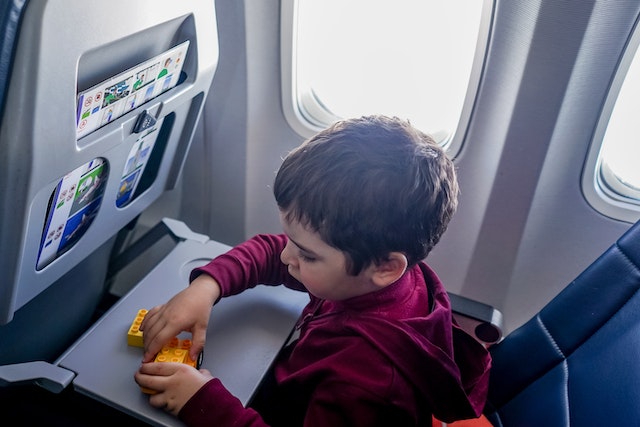
Understanding Family Travel
When it comes to family travel, there are many things to consider. From packing to transportation, there are many factors that can impact the success of a family vacation. However, with the right preparation and planning, family travel can be an enjoyable and rewarding experience for everyone involved.
One of the most important things to consider when traveling with kids is safety. It is important to ensure that all necessary safety measures are taken, such as using car seats and seat belts, and keeping an eye on children at all times. Additionally, it is important to plan for any potential emergencies, such as bringing along a first aid kit and knowing the location of nearby medical facilities.
Another key aspect of family travel is keeping kids entertained. Whether it’s bringing along books, games, or electronic devices, having activities to keep kids occupied during long flights or car rides can make all the difference. It is also important to plan activities and excursions that are appropriate for children, such as visiting family-friendly attractions or parks.
When planning a family vacation, it is important to consider the needs and interests of everyone involved. This may include choosing a destination that offers a variety of activities and attractions, or finding accommodations that are comfortable and convenient for the whole family. It is also important to set realistic expectations and to be flexible, as unexpected challenges can arise during travel.
Overall, family travel can be a wonderful way to create lasting memories and strengthen bonds between loved ones. By taking the necessary precautions and planning ahead, families can ensure a safe and enjoyable travel experience.
Pre-Travel Preparations
Planning Ahead
When it comes to traveling with kids, planning ahead is crucial. Research your destination and plan accordingly. Make a packing list and ensure you have all the essentials, including toys, snacks, and diapers. If you have a stroller, make sure it’s lightweight and easy to fold.
Packing Essentials
When packing for a family vacation, make sure to pack smart. Bring along a carry-on bag with all your essentials, including extra clothes, snacks, and toys. Don’t forget to pack any necessary medications and first aid supplies.
Mindset and Attitude
Maintaining a positive mindset is key to a stress-free travel experience. Make sure everyone is well-rested before the flight and try to keep a positive attitude. Remember that traveling with kids can be challenging, but it’s also an adventure.
Health and Safety Measures
Before traveling, make sure everyone is up to date on their vaccinations. Pack hand sanitizer and wipes to keep everyone’s hands clean. Consider purchasing travel insurance in case of any unexpected health issues.
48 Hours Before Travel
In the 48 hours leading up to your flight, make sure to stick to your routine as much as possible. This will help reduce stress and anxiety for both you and your kids. Make sure to pack your carry-on bag and double-check your packing list.
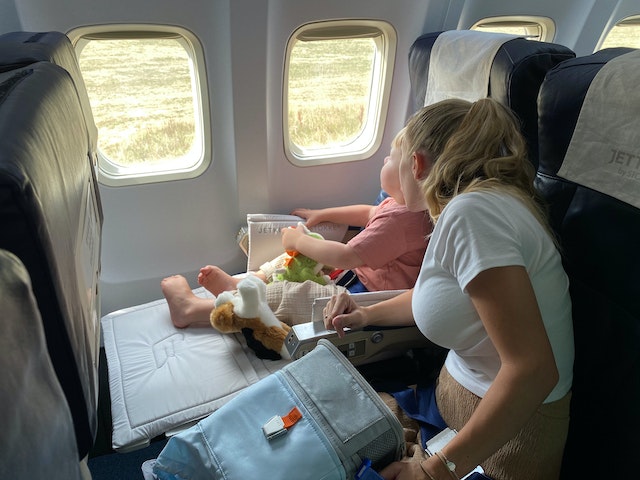
Boarding and Takeoff
Boarding and takeoff can be stressful for young children. Try to keep them occupied with books, games, online games (like checkers online), coloring books, movies, puzzles, videos, or board games. Consider creating a scavenger hunt to keep them entertained.
In-Flight Activities
During the flight, keep your kids entertained with in-flight entertainment. Many airlines offer movies, TV shows, and games for kids. Bring along snacks and toys to keep them occupied.
Dealing with Challenges
Traveling with kids can be challenging, but it’s important to stay calm and patient. If your child is experiencing anxiety or ear pressure during landing, try giving them gum or a lollipop to help.
Post-Flight and Arrival
After your flight, try to stick to your routine as much as possible to help reduce jet lag. Take some time to explore your new surroundings and immerse yourself in the local culture.
Exploring New Cultures
Traveling with kids is a great opportunity to expose them to new cultures. Encourage them to try new foods and learn about different customs and traditions.
Traveling with Young Children
When traveling with young children, it’s important to be prepared. Bring along extra diapers, wipes, and snacks. Consider bringing a stroller or carrier to make it easier to navigate through the airport.
Overall, with a little bit of planning and preparation, traveling with kids can be a fun and rewarding experience.
Frequently Asked Questions
What are some tips for flying with young children?
Flying with young children can be a challenge, but with some preparation, it can be a smooth experience. Here are some tips:
- Book a direct flight if possible to minimize time spent in airports and on planes.
- Bring snacks, toys, books, and other items to keep your child entertained.
- Pack extra clothes and diapers in case of spills or accidents.
- Consider bringing a car seat or a travel pillow to help your child sleep.
- Be patient and understanding with your child, and try to maintain a positive attitude throughout the flight.
How can I prepare my child for their first flight?
Preparing your child for their first flight can help alleviate any fears or anxiety they may have. Here are some tips:
- Explain the process of flying to your child, including going through security, boarding the plane, and taking off and landing.
- Show your child pictures or videos of airplanes and airports to help them become familiar with the environment.
- Answer any questions your child may have and address any concerns they may express.
- Consider bringing a favorite toy or comfort item for your child to hold during the flight.
What are some essential items to pack when flying with kids?
When flying with kids, it’s important to pack essential items to make the experience more comfortable. Here are some items to consider:
- Snacks and drinks to keep your child fed and hydrated.
- Entertainment items such as books, toys, and electronic devices.
- Extra clothes, diapers, and wipes in case of spills or accidents.
- Comfort items such as a travel pillow or blanket.
- Medications or first aid items if necessary.
What are some ways to keep kids entertained on a plane?
Keeping kids entertained on a plane can help make the flight more enjoyable for everyone. Here are some ideas:
- Bring books, toys, and electronic devices to keep your child occupied.
- Play games such as “I Spy” or “20 Questions.”
- Bring coloring books and crayons or markers.
- Watch movies or TV shows on a tablet or other device.
- Listen to music or podcasts.
What are some ways to deal with a child’s fear of flying?
If your child has a fear of flying, there are some ways to help alleviate their anxiety. Here are some tips:
- Explain the process of flying to your child and what to expect during the flight.
- Reassure your child that flying is safe and that many people do it every day.
- Consider using a relaxation technique such as deep breathing or visualization.
- Bring a favorite toy or comfort item for your child to hold during the flight.
- Consider talking to your child’s doctor about medication or other options to help manage anxiety.
What are some tips for flying with children who have special needs?
Flying with children who have special needs can be challenging, but with some preparation, it can be a positive experience. Here are some tips:
- Contact the airline ahead of time to discuss any special accommodations or needs your child may have.
- Bring any necessary equipment or supplies, such as a wheelchair or oxygen tank.
- Consider using a social story or visual schedule to help your child understand the process of flying.
- Be patient and understanding with your child, and try to maintain a positive attitude throughout the flight.
United Travel Bank: What You Need to Know
United TravelBank is a digital wallet program offered by United Airlines that allows customers to store and use travel credits for future flights. The program is available to all United Airlines customers and offers a flexible, easy-to-use platform for managing travel funds. TravelBank funds can be used to purchase flights, upgrade seats, and pay for baggage fees, among other things.
United TravelBank is closely tied to United Airlines’ MileagePlus program, which allows customers to earn and redeem miles for flights, upgrades, and other rewards. TravelBank funds can be used in conjunction with MileagePlus miles to pay for flights or other travel expenses. The program is also available to customers who hold United TravelBank credit cards, which offer additional benefits and rewards for frequent travelers.
Key Takeaways:
- United TravelBank is a digital wallet program offered by United Airlines for managing travel credits.
- TravelBank funds can be used to purchase flights, upgrade seats, and pay for baggage fees, among other things.
- The program is closely tied to United Airlines’ MileagePlus program and is available to customers who hold United TravelBank credit cards.

Understanding United TravelBank
What is United TravelBank
United TravelBank is a digital wallet that allows travelers to store funds and use them to book flights, hotels, and other travel-related expenses. It is a free service offered by United Airlines that can be accessed through the United website or mobile app.
How United TravelBank Works
When a user signs up for United TravelBank, they are given a balance that can be used to pay for travel expenses. This balance is called TravelBank Cash and can be earned through various means such as cancelled flights, United credit card rewards, and other promotions.
TravelBank Cash can be used to pay for any United flight, hotel booking, or rental car reservation. Users can also add funds to their TravelBank account using a credit or debit card.
One of the benefits of using United TravelBank is that it allows users to easily track their travel expenses in one place. Users can view their balance, transaction history, and upcoming trips all in one dashboard.
Overall, United TravelBank is a convenient and easy-to-use service for travelers who want to save money on travel expenses. With no fees and the ability to earn TravelBank Cash through various means, it’s a great option for frequent United travelers.
United TravelBank and MileagePlus
United MileagePlus Overview
United MileagePlus is a loyalty program offered by United Airlines that rewards its members with miles for their flights and other activities. Members can redeem these miles for various rewards, such as flights, hotel stays, car rentals, and more. The program has several tiers, including Premier Silver, Premier Gold, Premier Platinum, and Premier 1K, each with its own set of benefits.
Comparing TravelBank and MileagePlus
United TravelBank is a cash-based program that allows customers to earn and redeem TravelBank cash on United Airlines flights. TravelBank cash can be used to purchase flights, seat upgrades, baggage fees, and other travel-related expenses. Unlike MileagePlus, TravelBank does not offer a tiered loyalty program or the ability to earn miles for flights.
While TravelBank is a good option for those who prefer cash rewards and flexibility, MileagePlus is a better choice for frequent flyers who want to earn miles and enjoy the benefits of a tiered loyalty program. MileagePlus members can earn miles on flights with United Airlines and its partners, as well as through credit card spending and other activities. They can also enjoy benefits such as priority boarding, lounge access, and free checked bags, depending on their tier.
In summary, United MileagePlus and TravelBank both offer rewards for United Airlines customers, but they have different structures and benefits. MileagePlus is better suited for frequent flyers who want to earn miles and enjoy a tiered loyalty program, while TravelBank is a good option for those who prefer cash rewards and flexibility.

United TravelBank Credit Cards
United TravelBank Credit Card Features
The United TravelBank Credit Card is a travel credit card that offers a range of benefits to its users. Some of the key features of this credit card include:
- 2% cash back on all United purchases
- 1.5% cash back on all other purchases
- No foreign transaction fees
- $150 United TravelBank cash for every $1,000 spent on the card
- Travel and purchase protection benefits
In addition to these benefits, the United TravelBank Credit Card also offers a range of other perks and rewards, such as priority boarding, free checked bags, and access to United Club lounges.
However, it is important to note that the United TravelBank Credit Card does come with certain terms and conditions, such as an annual fee and a variable APR. It is important to read and understand these terms and conditions before applying for the card.
Best Travel Credit Cards Comparison
When comparing travel credit cards, the United TravelBank Credit Card is a strong contender due to its competitive rewards and benefits. However, there are other travel credit cards on the market that may offer different benefits and rewards.
Some of the best travel credit cards to consider when comparing to the United TravelBank Credit Card include:
- Chase Sapphire Preferred
- Capital One Venture Rewards Credit Card
- American Express Platinum Card
- Citi Premier Card
Each of these credit cards offers its own unique benefits and rewards, such as bonus points for sign-up, access to airport lounges, and travel insurance coverage. It is important to compare the features and benefits of each card to determine which one is the best fit for your travel needs.
Overall, the United TravelBank Credit Card is a strong choice for those who frequently travel with United Airlines and want to earn cash back on their purchases. However, it is important to compare the benefits and rewards of other travel credit cards to determine which one is the best fit for your individual needs.
Using United TravelBank Funds
Booking Flights with TravelBank Cash
When it comes to booking flights with United TravelBank, customers can use their TravelBank cash to pay for United flights. This option is available during the checkout process on United’s website or mobile app. Customers can choose to pay for their entire flight or just a portion of it with their TravelBank cash. It’s important to note that TravelBank cash cannot be used to pay for taxes, fees, or any other charges associated with a United flight.
To use TravelBank cash to book a flight, customers must have a United TravelBank account and a sufficient balance in their account. The TravelBank cash balance will be automatically applied to the total cost of the flight at checkout. If the TravelBank cash balance is not enough to cover the cost of the flight, customers can choose to pay the remaining balance with a credit card or other payment method.
Managing TravelBank Balance
Customers can view their TravelBank cash balance and transaction history by logging into their United TravelBank account. The account dashboard will display the current balance, as well as any recent transactions. Customers can also add funds to their TravelBank account at any time by using a credit card or other payment method.
It’s important to note that TravelBank cash does not expire and can be used for future United flights. However, if a customer cancels a flight that was paid for with TravelBank cash, the cash will be refunded back to the TravelBank account. If a customer cancels a flight that was paid for with a combination of TravelBank cash and another payment method, the TravelBank cash portion will be refunded back to the TravelBank account, while the other payment method will be refunded separately.
Overall, using United TravelBank funds is a convenient way to pay for United flights. Customers can easily manage their TravelBank cash balance and use it to pay for flights without the need for a credit card or other payment method.

United TravelBank and Flight Cancellations
United TravelBank is a program that allows United Airlines and United Express passengers to earn credits that can be used towards future flights. However, flight cancellations can sometimes disrupt travel plans and lead to confusion about how TravelBank credits and future flight credits work. This section will cover United TravelBank and Flight Cancellations, including Flight Cancellation Policies, Future Flight Credits, and TravelBank.
Flight Cancellation Policies
When a flight is canceled, United Airlines and United Express have policies in place to help passengers. Passengers may be able to receive a refund, rebook their flight, or receive a future flight credit. The specific policies vary depending on the reason for the cancellation and the type of ticket purchased. It is important to check the airline’s website or contact customer service for more information.
Future Flight Credits and TravelBank
If a passenger receives a future flight credit due to a canceled flight, they can use it towards a future flight on United Airlines or United Express. The credit is typically valid for one year from the date of issue and can be used for the base fare of a ticket. However, taxes, fees, and other charges may still apply.
TravelBank is similar to future flight credits, but it is earned through the United TravelBank program. Passengers can use TravelBank cash to pay for flights, baggage fees, and other travel expenses. The cash is valid for 24 months from the date it was earned and can be combined with other forms of payment.
In conclusion, United TravelBank and Flight Cancellations can be confusing, but understanding the Flight Cancellation Policies, Future Flight Credits, and TravelBank can help passengers navigate the process. It is important to check the airline’s website or contact customer service for more information about specific policies and procedures.
United TravelBank and Airline Credits
Understanding Airline Credits
Airline credits are a form of compensation provided by airlines to customers who experience disruptions or inconveniences during their travels. These credits can be used towards future flights with the same airline or its partners. Airline credits are typically issued in the form of electronic certificates or travel funds that can be redeemed online or over the phone.
United Airlines offers airline credits to eligible customers who experience flight cancellations, delays, or other disruptions. These credits can be used towards the purchase of future flights, seat upgrades, baggage fees, and other travel-related expenses. United also offers travel certificates, which are similar to airline credits but can be used towards the purchase of vacation packages, hotel stays, and car rentals.
Airline Credits vs TravelBank Funds
United TravelBank is a separate program that allows customers to earn and use TravelBank cash towards the purchase of flights, seat upgrades, and other travel-related expenses. TravelBank cash is earned by booking flights through United’s website or mobile app, and can be used towards any future travel with United.
While airline credits and TravelBank cash can both be used towards the purchase of flights and other travel-related expenses, there are some key differences between the two. Airline credits are typically issued as a form of compensation for flight disruptions, while TravelBank cash is earned through regular travel booking. Additionally, airline credits are typically issued in fixed denominations, while TravelBank cash can be earned and used in varying amounts.
Overall, United TravelBank and airline credits can be valuable resources for customers looking to save money on future travel expenses. By understanding the differences between these programs, customers can make informed decisions about how to best use their rewards.

Conclusion
Overall, United TravelBank is a useful tool for those who frequently fly with United or other U.S. airlines. The ability to earn rewards for flights and use them towards future travel is a valuable feature. Additionally, the ability to use TravelBank funds to pay for flights and other travel expenses is convenient and can help travelers save money.
United TravelBank is particularly beneficial for those who frequently travel for business. The ability to earn rewards for work-related travel and use them towards personal trips can be a great perk. Additionally, the ability to track and manage expenses through the TravelBank app can make expense reporting easier for employees and employers alike.
While United TravelBank may not be the best option for those who do not frequently travel with United or other U.S. airlines, it is certainly worth considering for those who do. The rewards program and travel expense management features make it a valuable tool for frequent flyers.
Overall, United TravelBank is a solid option for those looking to earn rewards and save money on travel.
Frequently Asked Questions
What is United TravelBank and how does it work?
United TravelBank is a travel credit that can be used towards the purchase of United Airlines flights. When a customer makes a purchase on United.com or through the United mobile app, they have the option to use their TravelBank funds as a form of payment. The amount in the TravelBank can be used towards the base fare of the flight, but not towards taxes, fees, or other charges.
How do I access my United TravelBank account?
Customers can access their United TravelBank account by logging in to their United Airlines account on United.com or through the United mobile app. Once logged in, the customer can view their TravelBank balance and make purchases using their TravelBank funds.
What is the expiration policy for United TravelBank?
United TravelBank funds expire one year from the date they are issued. If a customer does not use their TravelBank funds before the expiration date, the funds will be forfeited and cannot be used towards future purchases.
Can United TravelBank be used to purchase flights with other airlines?
No, United TravelBank funds can only be used towards the purchase of United Airlines flights.
What are the benefits of using United TravelBank?
Using United TravelBank can provide customers with a convenient and flexible way to pay for their United Airlines flights. Additionally, customers can earn TravelBank funds through various promotions and offers, which can help reduce the cost of future flights.
Are there any restrictions on using United TravelBank for checked bags?
No, customers can use their United TravelBank funds towards the purchase of checked bags on United Airlines flights. However, the funds cannot be used towards the purchase of other services, such as seat upgrades or in-flight purchases.
Cosco Travel: Your Ultimate Guide to Affordable and Convenient Travel Options
Costco Travel has become a popular choice for travelers looking for affordable vacation packages. With its competitive pricing and various travel destinations, it’s no wonder why many people turn to Costco Travel for their vacation needs.
What is Costco Travel? It’s a travel booking service that offers a variety of vacation packages, including flights, hotels, rental cars, and cruises. Costco Travel is available to Costco members only, and it can be accessed through the Costco website or by calling their customer service line.
Making a reservation with Costco Travel is a straightforward process. Customers can easily search and compare vacation packages on the website, and then make a reservation online or by calling customer service. However, there are some additional steps that drivers under the age of 25 must follow when renting a car through Costco Travel.
Key Takeaways
- Costco Travel is a popular choice for affordable vacation packages
- It offers a variety of travel destinations and can be accessed through the Costco website or customer service line
- Making a reservation is a straightforward process, but drivers under 25 must follow additional steps when renting a car.

What is Costco Travel
Costco Travel is a travel agency operated by Costco Wholesale Corporation, a membership-based warehouse club. The company offers a wide range of travel services, including vacation packages, cruises, rental cars, and hotel bookings. Costco Travel is known for its competitive pricing and exclusive member benefits.
One of the unique features of Costco Travel is that it offers vacation packages that include airfare, hotel accommodations, and rental cars, all in one package. These packages are often priced lower than booking each component separately, and they also come with additional perks like free breakfast or resort credits.
Another benefit of booking through Costco Travel is that members can earn cash back on their bookings. Depending on the type of travel booked, members can earn up to 2% cash back on their purchases.
Costco Travel also offers a Best Price Guarantee, which means that if a member finds a lower price on the same itinerary within 24 hours of booking, Costco Travel will match the price and provide a $50 credit towards a future booking.
Overall, Costco Travel provides a convenient and cost-effective option for members looking to plan their next vacation.
How to Make a Reservation
Making a reservation with Cosco Travel is easy and straightforward. Follow the steps below to book your rental car in just a few minutes.
Pick-Up and Drop-Off Location
When making a reservation, the first step is to select your pick-up and drop-off locations. Cosco Travel has a wide range of locations across the country, so you can choose the one that is most convenient for you. You can either select an airport location or a non-airport location.
Rental Period
Next, you will need to select the rental period. This includes the pick-up date and time, as well as the drop-off date and time. Be sure to select the correct dates and times to ensure that you are charged the correct amount for your rental.
Coupon Override
If you have a coupon code, you can enter it during the reservation process to receive a discount on your rental. Simply enter the code in the “Coupon Override” section of the reservation form.
Once you have entered all of the necessary information, you can review your reservation and make any changes if necessary. Then, simply submit your reservation and you’re all set!
Overall, making a reservation with Cosco Travel is a quick and easy process. With a wide range of locations and rental options, you’re sure to find the perfect rental car for your needs.

Additional Information for Drivers Under 25
Renting a car can be a great way to explore a new place, but for drivers under 25, it can also come with additional restrictions and fees. If you’re a young driver looking to rent a car with Cosco Travel, here’s what you need to know.
Age Restrictions
Drivers under the age of 25 are considered to be “young drivers” by most rental car companies, and Cosco Travel is no exception. If you’re under 25, you may be subject to additional fees or restrictions when renting a car.
Additional Fees
Young drivers may be subject to additional fees when renting a car with Cosco Travel. These fees can vary depending on the location and the type of car you’re renting, but they can add up quickly. It’s important to factor these fees into your budget when planning your trip.
Restrictions
In addition to fees, young drivers may also face additional restrictions when renting a car. For example, you may be limited in the types of cars you can rent, or you may be required to purchase additional insurance coverage. Make sure you read the rental agreement carefully to understand any restrictions that may apply to you.
Overall, renting a car as a young driver can be a bit more complicated than renting as an older driver. However, with some careful planning and research, you can still have a great experience with Cosco Travel.
Travel Destinations
North America
Cosco Travel offers a variety of exciting travel destinations in North America. Whether you’re looking for a relaxing beach vacation or an adventurous trip to the mountains, there’s something for everyone.
Vancouver & Whistler
Vancouver and Whistler are two of Canada’s top destinations for outdoor enthusiasts. Vancouver is a bustling city with a vibrant food and arts scene, while Whistler is known for its world-class skiing and snowboarding.
Phoenix/Scottsdale & Sedona
Arizona’s Phoenix/Scottsdale and Sedona offer a unique blend of desert landscapes and luxury resorts. Visitors can hike in the Red Rocks of Sedona or relax at one of the many spas in Scottsdale.
Hawaii
Cosco Travel offers trips to four of Hawaii’s main islands: Oahu, Kauai, Hawaii Island, and Maui. Each island has its own unique attractions, from the beaches of Waikiki to the volcanic landscapes of Hawaii Island.
Napa Valley/Sonoma & San Francisco
California’s Napa Valley and Sonoma are known for their world-class wineries and beautiful countryside. San Francisco, on the other hand, offers a bustling city atmosphere with iconic landmarks like the Golden Gate Bridge.
San Antonio & Austin
Texas’ San Antonio and Austin are two cities with distinct personalities. San Antonio is known for its rich history and the Alamo, while Austin is a hub of live music and vibrant nightlife.
Europe
Cosco Travel also offers a variety of travel destinations in Europe. From the romantic canals of Venice to the bustling streets of London, there’s something for every type of traveler.
Paris, Dublin, Rome, Madrid, Milan, Amsterdam, Venice, London, Edinburgh, Scottish Countryside, & Barcelona
These cities offer a diverse range of experiences, from the art and culture of Paris to the historic landmarks of Rome. Visitors can stroll along the canals of Venice or explore the vibrant nightlife of Barcelona.
Central Crete, Mykonos, & Santorini
Greece’s Central Crete, Mykonos, and Santorini offer stunning views of the Aegean Sea and a chance to explore ancient ruins and historic landmarks.
Cosco Travel provides a wide range of travel options to fit any budget and travel style. Whether you’re looking for a relaxing beach vacation or an adventurous trip to the mountains, they have you covered.

Troubleshooting
When booking with Cosco Travel, sometimes customers may encounter issues with their location information. This section will cover common problems and solutions for location errors.
Location Errors
If a customer receives a message that says “Sorry We’re Unable to Find Your Location,” there are a few possible reasons why this may be happening. The first thing to check is if the customer’s device has location services enabled. If it does not, they will need to turn it on in order for Cosco Travel to accurately locate them.
Another reason for location errors could be due to poor internet connectivity. If the customer’s device is not connected to the internet or has a weak signal, Cosco Travel may not be able to accurately locate them. In this case, the customer should try moving to a different location with better connectivity or wait until they have a stronger signal.
If the issue persists, the customer can try manually entering their location information. This can be done by selecting “Edit Pick-Up Location” on the booking page.
Editing Pick-Up Location
If a customer needs to edit their pick-up location, they can do so by selecting the “Edit Pick-Up Location” option on the booking page. This will allow them to manually enter their desired location information.
When editing their pick-up location, customers should ensure that the information they enter is accurate and up-to-date. This will help ensure that their driver can locate them quickly and easily.
If the customer needs their pick-up location to be the same as their drop-off location, they can select the “Same as Pick-Up Location” option on the booking page.
In summary, location errors can be caused by a variety of factors, including poor internet connectivity and device settings. If a customer encounters a location error, they should ensure that their device has location services enabled and try moving to a location with better connectivity. If the issue persists, they can manually enter their location information using the “Edit Pick-Up Location” option on the booking page.
Finalizing Your Reservation
Once you have found the perfect travel package on Cosco Travel using the Low Price Finder, it’s time to finalize your reservation. The process is simple and straightforward, ensuring that you can book your dream vacation with ease.
First, make sure that you have reviewed all of the details of your chosen package. This includes the travel dates, accommodations, and any additional perks or amenities that are included. If you have any questions or concerns, reach out to Cosco Travel’s customer service team for assistance.
Next, select the “Book Now” button to begin the reservation process. You will be prompted to enter your personal information, including your name, address, and payment details. Cosco Travel uses secure encryption technology to protect your sensitive information and ensure that your transaction is safe and secure.
Once you have entered all of the necessary information, review your reservation details one last time to ensure that everything is correct. If you need to make any changes, now is the time to do so. When you are ready, submit your reservation and await confirmation from Cosco Travel.
In the event that you need to cancel or modify your reservation, Cosco Travel offers flexible options to accommodate your needs. Simply reach out to their customer service team for assistance.
With Cosco Travel, finalizing your reservation is a simple and stress-free process. Whether you are planning a romantic getaway or a family vacation, you can trust Cosco Travel to provide exceptional service and unbeatable value.

Frequently Asked Questions
What are the best vacation packages available on Costco Travel?
Costco Travel offers a wide range of vacation packages to various destinations around the world. Some of the most popular vacation packages include all-inclusive resorts in Mexico, Hawaii, and the Caribbean. They also offer vacation packages to Europe, Asia, and other destinations. Customers can customize their packages by selecting flights, hotels, transportation, and activities.
How does Costco Travel compare to other travel sites for vacation packages?
Costco Travel is known for offering competitive prices on vacation packages. They negotiate with suppliers to offer exclusive deals and discounts to their members. In addition, they offer a 100% satisfaction guarantee, which means that if customers are not satisfied with their vacation package, they can get a full refund.
Are there any current coupons or discounts available for Costco Travel?
Costco Travel regularly offers coupons and discounts to their members. Members can check the Costco Travel website or their local warehouse for current promotions. Costco Travel also offers a rewards program, which allows members to earn cash back on their purchases.
What are the top-rated cruises offered by Costco Travel in 2024?
Costco Travel offers a variety of cruises to destinations around the world. Some of the top-rated cruises for 2024 include a 14-night cruise to Alaska, a 7-night cruise to the Caribbean, and a 10-night cruise to Europe. Customers can choose from a variety of cruise lines, including Royal Caribbean, Celebrity Cruises, and Norwegian Cruise Line.
Has anyone used Costco Travel for a trip to Korea? How was the experience?
There are many reviews online from customers who have used Costco Travel for a trip to Korea. Many customers have reported having a positive experience with Costco Travel. They praised the company for offering competitive prices and excellent customer service.
Is it worth it to book a trip through Costco Travel according to Reddit users?
According to Reddit users, booking a trip through Costco Travel can be worth it. Many users have reported saving money by booking through Costco Travel. They also praised the company for offering excellent customer service and a wide range of vacation packages.
SafetyWing Travel Insurance: Benefits, Coverage, and Reviews
SafetyWing is a travel insurance company that offers affordable and comprehensive coverage for travelers around the world. Founded in 2017, the company prides itself on providing insurance that is accessible to everyone, regardless of their nationality or destination. SafetyWing has gained popularity among digital nomads, remote workers, and long-term travelers who need flexible and reliable insurance options.
Understanding SafetyWing Travel Insurance is essential for anyone who is planning a trip and wants to protect themselves from unexpected events. The company’s policies cover medical expenses, emergency medical evacuation, trip interruption, and other travel-related risks. SafetyWing also offers 24/7 customer support and a simple and straightforward claims process, making it easy for customers to get the help they need when they need it.
Key Takeaways
- SafetyWing is a travel insurance company that offers affordable and comprehensive coverage for travelers around the world.
- Understanding SafetyWing Travel Insurance is essential for anyone who is planning a trip and wants to protect themselves from unexpected events.
- SafetyWing’s policies cover medical expenses, emergency medical evacuation, trip interruption, and other travel-related risks, and the company offers 24/7 customer support and a simple claims process.

Understanding SafetyWing Travel Insurance
SafetyWing is a travel insurance provider that offers coverage for digital nomads, freelancers, remote workers, and long-term travellers. Their insurance plans are designed to provide affordable and comprehensive coverage for those constantly on the move. Additionally, the longest term life insurance policy is a forty year term policy, which can provide long-lasting security for those looking for extended coverage.
Travel insurance is important for anyone who is traveling abroad, especially for long periods of time. It provides protection against unexpected events such as accidents, illnesses, and emergency medical expenses. SafetyWing offers a range of insurance plans that cater to the specific needs of digital nomads and long-term travelers.
One of the key benefits of SafetyWing travel insurance is its affordability. Their plans start at just $37 per month, making it accessible to those on a tight budget. The insurance covers a wide range of medical expenses, including hospitalization, emergency medical evacuation, and prescription drugs.
In addition to medical coverage, SafetyWing also offers coverage for trip interruption, lost luggage, and travel delays. This ensures that travelers are protected against unexpected events that can disrupt their travel plans.
Overall, SafetyWing travel insurance is a great option for digital nomads, freelancers, remote workers, and long-term travelers. Their plans are affordable, comprehensive, and designed specifically for those who are constantly on the move. With SafetyWing, travelers can have peace of mind knowing that they are protected against unexpected events while they explore the world.
Coverage Details
Medical and Health Coverage
SafetyWing travel insurance provides comprehensive medical and health coverage for travelers. The policy covers medical emergencies, physician visits, nursing services, and intensive care. In the case of a medical emergency, the policy provides coverage for ambulance services and emergency dental care. The policy also covers cancer treatment and remote health services.
The policy covers medical expenses incurred as a result of sickness or accident. It also covers medical evacuation in case of a natural disaster or terrorism. The policy includes coverage for COVID-19 related medical expenses, subject to policy terms and conditions.
Personal and Property Coverage
SafetyWing travel insurance provides coverage for personal and property losses that may occur during the trip. The policy includes coverage for lost luggage and personal items. The policy also provides coverage for personal liability and accidental death.
The maximum limits for coverage are specified in the policy documents. The policy also includes exclusions and limitations, which travelers should review before purchasing the policy.
Overall, SafetyWing travel insurance provides robust coverage for medical emergencies and personal losses that may occur during the trip. The policy is designed to provide peace of mind to travelers and their families.
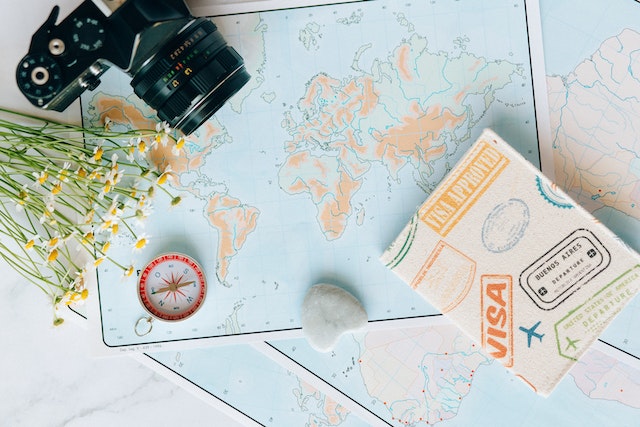
Pricing and Affordability
Understanding the Subscription Model
SafetyWing Travel Insurance offers a subscription-based model, which is a unique approach in the travel insurance industry. This model is ideal for digital nomads and long-term travelers who need coverage for an extended period. The subscription model allows travelers to purchase insurance coverage for a month at a time, with the option to renew the subscription for as long as needed.
The subscription model is beneficial for budget-conscious travelers who want to ensure they are covered without breaking the bank. It also provides flexibility for travelers who may not know how long they will be traveling and need coverage for an indefinite period.
Premium and Claims Pricing
SafetyWing Travel Insurance offers affordable premium rates, making it an excellent option for budget-conscious travelers. The pricing structure is straightforward, with a flat rate of $40 per month for travelers under the age of 40 and $80 per month for travelers over the age of 40.
In terms of claims, SafetyWing Travel Insurance has a straightforward claims process. Travelers can submit claims online, and the company aims to process claims within two working days. SafetyWing Travel Insurance also offers 24/7 customer support, which is beneficial for travelers in different time zones.
Overall, SafetyWing Travel Insurance offers affordable pricing and a straightforward claims process, making it an excellent option for budget-conscious travelers. The subscription model is also ideal for digital nomads and long-term travelers who need coverage for an extended period.
Exclusions and Limitations
While SafetyWing’s travel insurance offers comprehensive coverage, there are certain exclusions and limitations that travelers should be aware of. These limitations and exclusions can vary depending on the specific policy purchased, so it’s important to carefully review the policy documents before purchasing.
Exclusions
Some common exclusions that may apply to SafetyWing’s travel insurance policies include:
- Pre-existing medical conditions: If a traveler has a pre-existing medical condition, they may not be covered for any medical expenses related to that condition.
- Extreme sports and activities: Certain high-risk activities, such as bungee jumping or skydiving, may not be covered under the policy.
- Illegal activities: Any injuries or accidents that occur as a result of illegal activities will not be covered by the policy.
Limitations
In addition to exclusions, there may be certain limitations to the coverage provided by SafetyWing’s travel insurance policies. Some common limitations include:
- Age restrictions: Some policies may have age restrictions that limit coverage for travelers over a certain age.
- Trip duration limits: Depending on the policy, there may be limits on the length of the trip that is covered.
- Coverage limits: The policy may have limits on the amount of coverage provided for certain types of expenses, such as medical expenses or trip cancellations.
It’s important to carefully review the policy documents to understand any exclusions or limitations that may apply, as well as the specific coverage provided by the policy.

Claim Process and Customer Service
SafetyWing offers a seamless and efficient claim process for its policyholders. In case of any medical emergency or unexpected situation, customers can file a claim through the SafetyWing app or website. The process is simple and straightforward, and the company aims to process claims within a few working days.
The customer service team at SafetyWing is available 24/7 to assist policyholders with any queries or concerns. The team is knowledgeable and well-trained to handle any situation with confidence. Customers can reach out to the team via phone, email, or chat, and the response time is quick.
SafetyWing also offers a comprehensive FAQ section on its website, which covers most of the common queries related to the claim process and policy coverage. The company believes in transparency and ensures that customers are well-informed about the policy terms and conditions.
In addition to the customer service team, SafetyWing has a global network of medical providers and hospitals. The company has partnered with some of the best medical facilities around the world to ensure that policyholders receive quality medical care in case of an emergency.
Overall, SafetyWing’s claim process and customer service are top-notch, and the company strives to provide its customers with a hassle-free experience.
Coverage in Specific Countries
SafetyWing travel insurance provides coverage in many countries around the world. However, it is important to note that coverage may vary depending on the country. In this section, we will take a closer look at the coverage provided by SafetyWing in Afghanistan, Colombia, and Costa Rica.
Afghanistan
SafetyWing travel insurance does not provide coverage in Afghanistan. It is important to note that Afghanistan is considered a high-risk country and many travel insurance providers do not offer coverage there. If you plan on traveling to Afghanistan, it is recommended that you seek alternative insurance options.
Colombia
SafetyWing travel insurance provides coverage in Colombia. This includes coverage for medical expenses, emergency medical evacuation, and trip interruption. However, it is important to note that coverage may be limited in certain areas of the country. For example, coverage may be limited in areas affected by civil unrest or areas with high crime rates.
Costa Rica
SafetyWing travel insurance provides coverage in Costa Rica. This includes coverage for medical expenses, emergency medical evacuation, and trip interruption. However, it is important to note that coverage may be limited in certain areas of the country. For example, coverage may be limited in areas affected by natural disasters such as hurricanes or earthquakes.
In summary, SafetyWing travel insurance provides coverage in many countries around the world. However, coverage may vary depending on the country and it is important to review the policy carefully before purchasing. If you plan on traveling to a high-risk country such as Afghanistan, it is recommended that you seek alternative insurance options.
Travel Interruptions and Delays
SafetyWing Travel Insurance covers a variety of travel interruptions and delays. In the unfortunate event that a traveler’s trip is interrupted or delayed, SafetyWing provides coverage for additional expenses incurred as a result.
Trip Interruption
If a traveler’s trip is interrupted due to a covered reason, SafetyWing will reimburse the traveler for non-refundable expenses such as flights, accommodations, and activities. Covered reasons for trip interruption include:
- Sickness, injury, or death of the traveler or a family member
- Natural disasters or severe weather preventing travel
- Terrorism or civil unrest at the destination
- Job loss or transfer
Travel Delay
If a traveler experiences a delay of more than 6 hours due to a covered reason, SafetyWing will reimburse the traveler for additional expenses such as meals and accommodations. Covered reasons for travel delay include:
- Inclement weather
- Mechanical breakdown of a common carrier
- Strike or labor dispute
- Hijacking or quarantine
Political Evacuation
In the event of political unrest or a government-issued evacuation order, SafetyWing provides coverage for evacuation and transportation expenses. This coverage is available for travelers who are in a country that becomes unstable due to political events.
Overall, SafetyWing Travel Insurance provides comprehensive coverage for travel interruptions and delays. Travelers can rest assured that they will be covered in the event of an unexpected delay or interruption.

Frequently Asked Questions
What are the benefits of SafetyWing travel insurance?
SafetyWing travel insurance provides a range of benefits to travelers, including coverage for emergency medical expenses, trip interruption, and travel delay. Other benefits include baggage delay coverage, personal liability coverage, and coverage for natural disasters. SafetyWing also offers 24/7 customer support and a simple online claims process.
How does SafetyWing travel insurance compare to other providers?
SafetyWing travel insurance offers competitive rates and comprehensive coverage compared to other travel insurance providers. The company also offers flexible policies that can be purchased on a rolling basis, making it an ideal choice for digital nomads and long-term travelers.
What is the cost of a SafetyWing travel insurance policy?
The cost of a SafetyWing travel insurance policy varies depending on the length of the trip and the level of coverage selected. Prices start at $1.32 per day for basic coverage, with more comprehensive plans available for an additional cost.
Does SafetyWing travel insurance cover COVID-19?
Yes, SafetyWing travel insurance covers COVID-19 medical expenses and travel disruption caused by the pandemic. However, coverage may be limited in certain countries or regions, so it is important to check the policy details before purchasing.
What is the claims process for SafetyWing travel insurance?
The claims process for SafetyWing travel insurance is simple and can be completed online. Travelers can submit their claims and supporting documentation through the SafetyWing website, and the company will process the claim and issue payment within a few business days.
Who underwrites SafetyWing travel insurance policies?
SafetyWing travel insurance policies are underwritten by Tokio Marine HCC, a leading provider of insurance products and services. Tokio Marine HCC is rated A+ by A.M. Best, indicating strong financial stability and a commitment to customer service.


